Text
5 LGBTQ Travel Tips for Asia
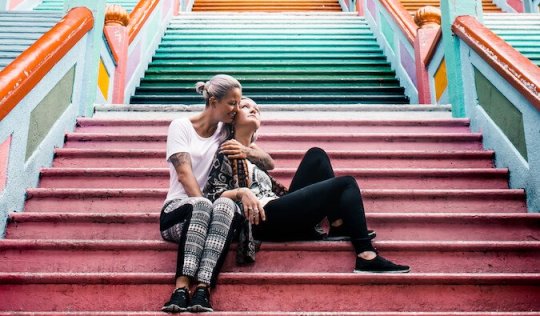

Posted: 11/7/2019 | November 7th, 2019
In this guest post, Charlotte Hockin offers some insight into gay travel in Asia. She and her girlfriend, Natalie, have been traveling around the continent for the past two years. Here’s what they’ve learned from traveling as a lesbian couple in Asia.
Asia is a vibrant, diverse, and exciting continent to visit. However, for LGBT travelers, it can sometimes seem like a daunting prospect. There are countries that criminalize homosexuality, deeply pious states and regions, and places that have negative social opinions of the LGBT community. It doesn’t exactly sound like all fun and rainbows, does it?
When my girlfriend and I set off on our Asian adventures two years ago, we had no idea what to expect but admittedly were rattled. Not only were we backpacking for the first time but we were traveling as a couple. Neither of us were really into social media at that point, so it almost felt like we were alone. The only lesbian couple to ever travel! Sounds silly, I know, but that’s how it felt.
Fast-forward two years, and we’ve spent the better part of that time traveling around Asia. And do you know what? Gay travel there has been one hell of a ride! I mean, we’ve experienced it all: we’ve visited gay-friendly destinations, attended illegal drag shows, stayed with local families, and on the rare occasion, been the victim of discrimination and hostility.
With this in mind, we have put together this comprehensive guide for LGBT travelers in Asia (excluding the Middle-East & Russia). We want to share our experiences as a same-sex couple in Asia, as well as lay out all the factors that you should consider when planning your trip.
We believe that travel should be for everyone, and with our guidance, you can look forward to an incredible and, most importantly, safe journey of a lifetime.
Tip 1: Research local laws

When planning your trip, it’s important to be aware of local laws regarding the LGBT community in each country you want to visit. At the same time, I don’t want you to make the common mistake of obsessing about these laws. Or worse, letting the law prevent you from visiting certain places.
Often, the laws relating to acts of homosexuality are incredibly complex. Some only apply to gay men, others mean the LGBT community are not protected from discrimination, and some countries implement sharia law. Governments do not expect tourists to get their head around this for the sake of a two-week trip. As a result, these laws are usually only enforced for locals, not tourists.
Nevertheless, that’s not to say you shouldn’t exercise caution when in public places. We suggest avoiding any public display of affection (PDA) or anything you think may draw unnecessary attention. Not just for the purpose of the law, but for the sake of being respectful. (I will touch further on understanding local cultures and social opinions below.)
On the other hand, some LGBT travelers may not want to even visit countries where these laws exist. And that’s understandable. But Asia is a huge continent.
To put things into perspective, out of the 72 countries that still criminalize homosexuality, just 10 are in Asia (outside the Middle East and Russia). That means that even if you wanted to boycott the countries where anti-gay laws are in place, close to 80% of Asia is yours for the taking.
Personally, we don’t have an issue visiting countries where homosexuality is illegal. We’ve spent a lot of time in the past two years in Malaysia, for example, where Islamic law prevails, and we thoroughly enjoyed it. (Pristine beaches, delectable cuisine, vibrant culture — what’s not to love?)
In the larger cities, such as Kuala Lumpur and Penang, we found a buzzing LGBT community. And we even illegally attended a spectacular drag show!
So I guess what I’m trying to say is: you don’t need to dismiss traveling in Asia for the sake of a few old-fashioned laws. Gay travel there is way too much fun for that!
Here are a few resources to help you research local laws:
The International Lesbian and Gay Association – Their world map summarizes sexual orientation laws by country.
Human Dignity Trust – This website has fact sheets on countries that criminalize homosexuality.
State Sponsored Homophobia Report – Check out their 2017 world survey for a list of sexual orientation laws.
Tip 2: Understand the local culture

Understanding and respecting the local culture in each place you visit is just as — if not more — important than the first tip. Why? Well, think about it: you’re going to spend way more time in the company of residents than you are around law enforcement officers. Comprehending the social opinion of locals could save you a lot of awkwardness and funny looks in the long run.
You see, what we discovered is that even in some countries where homosexuality is legal, it remains taboo in the community. This could be due to religious beliefs, a lack of education around the subject, or, in some cases, plain bigotry.
However, isn’t that so in most places? Even in the most advanced countries, I think we can safely say there is room for improvement.
At the same time, understanding the local culture is also important for every traveler. PDA, for example, is frowned upon in most countries in Asia — even if you are a straight couple.
On the other hand, holding hands with somebody of the same sex is extremely common in India, whether it be your brother, sister, friend, or otherwise.
This is why it’s essential to educate yourself in advance, so you know what to expect.
The typical social situations we have found ourselves in have never been a cause for concern when traveling in Asia. Often people assume we are sisters or friends. And even on the rare occasion that we’ve tried to explain our relationship, some locals don’t understand. We once stayed with a family in Indonesia for over a week, and they never could get their head around the fact that we were a couple.
But that was OK with us. What’s important is that they treated us like family, and honestly, it’s one of our most memorable travel experiences.
On the other hand, there have been times where we were allocated a twin room despite booking a double, been catcalled for being lesbians, and had religious jargon thrown at us.
But again, doesn’t this happen everywhere?
We certainly didn’t allow these minor incidents to ruin our travel experience. On the grand scale of things, these are few and far between amid all the breathtaking experiences we had.
The United Nations Development Programme has a series of country reports about Being LGBT in Asia, including in-depth sections devoted to cultural and social attitudes.
Tip 3: Be prepared to adapt

When you take into consideration everything we’ve talked about, being prepared to adapt is part and parcel of gay travel in Asia. Although, when you think about it, doesn’t this apply to all travelers?
What I’m trying to say is that any place you travel to is bound to require an element of adaptation, whether it be the food you eat, the clothes you wear, or the way in which you address the locals. It’s about recognizing what’s socially acceptable and behaving in a way that’s both respectful and appropriate.
That said, it’s a controversial subject whether LGBT couples should travel to destinations where they can’t be entirely themselves. We get challenged on this a lot, and our point is simply this: There are many elements to some religions, cultures, and the like, that I’m sure many of us don’t agree with. However, does that mean we should boycott those countries? I think it would leave a very limited pool to choose from if that were the case.
At the same time, we can empathize with those who may not feel comfortable traveling to places where they can’t be themselves. Or perhaps feel anxious as a solo LGBT traveler or an LGBT couple. If this is the case, there are plenty of gay-friendly travel destinations both in Asia and elsewhere in the world. Either way, so long as you do your research and take all the necessary precautions, you have no reason to be afraid.
Tip 4: Look up the local gay scene

When traveling to a new place, one of the first things we do is look up if there’s a local gay scene. Let’s face it: everybody knows that gay bars are the most fun! But on a serious note, it’s comforting knowing there is a safe place you can go to — a space where you can be yourself without judgment and let your hair down.
Thankfully, most Asian countries boast an active gay scene of some kind. Particularly in the big cities, you can expect to find gay bars, nightclubs, saunas, gay-friendly hotels, and drag shows in abundance! We’ve had some of the wildest nights of our travels exploring the local gay scene. Whether it’s bar-hopping in Bangkok or attending illegal drag shows in Kuala Lumpur, you’re guaranteed a night to remember!
While a quick Google search will tell you where all the queer fun is at, Travel Gay Asia is an excellent website for finding LGBT-friendly spots in any city.
Tip 5: Connect with other LGBT travelers or locals

Again, socializing with people who understand you and won’t judge you is a reassuring way to adapt to a new place or culture. Of course, locating the local gay scene is a great start; however, not everybody has the guts to walk into a bar or nightclub on their own and attempt to make friends.
Thankfully, there are easier ways of meeting people in this day and age. Yes, the good old web has inundated us with opportunities to connect with like-minded people.
We suggest using social media to locate other LGBT travelers or locals in your area. Facebook is a fantastic platform for this, where a simple search will yield results for any LGBT groups in your area. Similarly, navigating certain hashtags on Instagram such as #gaybangkok or #LGBTAsia can help you locate all things LGBT near you.
Some useful platforms for meeting people are:
Tinder
Plenty of Fish
Couchsurfing
Purple Roofs (for finding LGBT-friendly accommodation)
You don’t need to use the above dating apps in any sort of romantic way either — they are just great resources for connecting with LGBT locals and travelers. If you’re lucky, you may find yourself connecting with a local who can show you all the best spots in their area.
***
While Gay Travel in Asia might seem daunting, it is far less scary than it sounds on paper. As a whole, we can honestly say we had nothing but a positive experience and made memories that will last us a lifetime. Asia is an extraordinary continent, oozing adventure, beauty, and culture. By following the advice in our article, and taking advantage of all the useful resources we’ve provided, we are confident Asia will steal your heart. Just as she has stolen ours.
Charlotte and Natalie are the explorers and adventurers behind Our Taste For Life. You will often find them wandering off the beaten path, immersed in nature, or enjoying authentic cultural experiences. The rest of the time, you will find them eating. Follow their journey on their blog or Instagram.
Book Your Trip: Logistical Tips and Tricks
Book Your Flight
Find a cheap flight by using Skyscanner or Momondo. They are my two favorite search engines because they search websites and airlines around the globe so you always know no stone is left unturned.
Book Your Accommodation
You can book your hostel with Hostelworld as they have the largest inventory. If you want to stay somewhere other than a hostel, use Booking.com as they consistently return the cheapest rates for guesthouses and cheap hotels. I use them all the time.
Don’t Forget Travel Insurance
Travel insurance will protect you against illness, injury, theft, and cancellations. It’s comprehensive protection in case anything goes wrong. I never go on a trip without it as I’ve had to use it many times in the past. I’ve been using World Nomads for ten years. My favorite companies that offer the best service and value are:
World Nomads (for everyone below 70)
Read the full article
0 notes
Text
What Does Travel Insurance ACTUALLY Cover?


Posted: 7/12/2019 | July 12th, 2019
Travel insurance is probably the most boring topic when it comes to planning a trip. Nobody wants to focus on the worst-case scenario before they even leave home.
Plus, researching insurance is just plain tedious. There is a lot of fine print to scour, requiring you to read over the minutiae of each insurance plan before you pick the one that’s best for you.
But it’s also the most important topic too. Should something terrible happen while you’re on the road, you want to have the confidence that your insurance plan will cover you.
While none of us want to imagine getting hurt or robbed or having to cancel our plans, the fact of the matter is that these things happen. It’s rare, but shit you don’t expect does happen when you travel.
I never expected to break my camera in Italy.
I never expected to rupture my eardrum scuba diving in Thailand.
I never expected to get stabbed in Colombia.
And while these unfortunate events are few and far between, it’s always better to be safe than sorry (trust me!). Medical bills aren’t cheap. Emergency evacuations cost tens of thousands of dollars. Unless you have a stockpile of disposable income, chances are you’ll want to buy travel insurance for your next trip.
There are a lot of misconceptions about travel insurance, so you’ll also want to learn everything you can about your plan and the company that is covering you.
Will your plan cover pre-existing conditions? Is there an age limit or a limit on how long you can be out of your home country? Will you be able to see doctors for non-emergency visits? What about dental coverage?
There is a lot to learn, and it can be overwhelming if travel insurance is new to you.
Fortunately, it doesn’t have to be!
In this post, I’ll go over what is ACTUALLY covered by reputable travel insurance plans, so you know what to look for.
Table of Contents
What Travel Insurance DOES Cover
What Travel Insurance DOES NOT Cover
Our Suggested Insurance Companies
What Travel Insurance DOES Cover
Medical Emergencies
Chances are when you think of travel insurance, you’re picturing a medical emergency.
While accidents or serious illnesses while traveling abroad are rare, here’s what you can expect to be covered by a reputable insurance company:
Your hospitalization fee
Surgery costs
Outpatient treatment costs
Visits to registered medical practitioners (relating to your emergency injury)
Prescribed medicines (relating to the injury)
Medical evacuation (usually this is just to a local medical facility unless you have a more comprehensive plan from a company like MedJet. See below for more on evacuation.)
Emergency Evacuation
Medical evacuations due to accidents or natural disasters can cost upwards of $500,000. Naturally, this is where having a solid insurance plan comes in handy. Most insurance plans will evacuate you to a local hospital in case of injury or a nearby location in the case of a natural disaster.
In some cases, you will be repatriated back to your home country as well (though this is rare and usually only occurs in cases where local medical staff can’t provide the assistance you need).
Dental Emergencies
As with other medical emergencies, what’s covered here is accidental injury and sudden pain. For example, chipped teeth or a sudden infection.
General checkups are not covered, nor is major dental work that doesn’t relate to an injury or accident sustained abroad. And if you just want your teeth cleaned or a new filling, you’ll have to pay for that out of pocket.
Death Overseas
I know it’s never fun thinking about something like this happening, but knowing that you’re covered will give you and your loved ones peace of mind.
Should the worst happen, most insurance plans will cover the costs of a family member coming to get your body to take it home. Some policies will also include cremation services or burial overseas, should that be preferred.
Common exclusions would include death from alcohol or illicit narcotics, suicide, or pre-existing conditions not covered by the plan.
Flight Delays and Cancellations
If your flight gets delayed or canceled, you can apply for compensation from your travel insurance provider (assuming the airline doesn’t provide coverage for you). As long as the cancellation or delay is not your fault, you can apply for reimbursement. However, if you miss your flight because you slept in, that doesn’t count as a valid reason!
Be sure to keep all emails, receipts, and correspondence from your airline regarding the delay or cancellation, as you’ll need them to verify your claim and get reimbursed.
Trip Cancellation
If you need to cancel your trip — either before you depart or during your trip — for a verified medical reason, the death of a close relative, or the death of your travel partner, you can apply to get reimbursed from your insurance company.
To verify your claim, be sure to get a note from your doctor if you’re canceling due to illness. If you’re canceling due to a death, you’ll need to submit a copy of the death certificate (as well as other supporting documentation).
Lost or Stolen Property
If your bags get stolen while you’re traveling, most travel insurance companies will reimburse you for some or all of the items (there are usually limits on gear like laptops and cameras unless you buy a comprehensive plan with additional coverage). Be sure to file a police report. It will be necessary for making a claim.
Coverage will usually include compensation for delayed baggage or baggage that’s damaged in transit as well.
If your wallet or passport is stolen, some plans will cover the cost of having a new passport or credit card mailed to you (this usually will depend on your residency). If your wallet is stolen with cash in it, most plans won’t reimburse you for the cash. One exception is the Explorer Plan from World Nomads, which covers up to $200 USD in cash compensation.
Damaged or Stolen Gear
Most travel insurance plans will include coverage for lost or stolen gear, such as laptops, cameras, and mobile phones. However, these high-ticket items usually have a cap on how much you’ll get back (usually under $1,000 USD per item). If you’re traveling with expensive gear, you’ll want to pay for supplementary coverage to make sure it’s sufficiently covered.
Be sure you have receipts for all your gear as well. Keep copies of them in your inbox, so if something happens, you can file your claim without having to track down copies.
What Travel Insurance Does NOT Cover
While every plan is different, here is a list of the most common things that will not usually be covered by your standard or basic travel insurance plan:
Accidents sustained while participating in extreme activities, like hang gliding, paragliding, or bungee jumping (though you can often upgrade to plans that do cover those activities)
Technical climbing or alpine hiking (again, some plans can be upgraded to cover these activities)
Alcohol- or drug-related incidents (including death)
Carelessness in handling your possessions and baggage
Pre-existing conditions. For example, if you have diabetes and need to buy more insulin, you won’t be covered
General checkups for non-emergencies
Stolen cash (usually not covered by the standard “theft coverage,” though some companies, like World Nomads, can insure a limited amount of your cash)
Missed flights or connections for reasons under your control
A few other notes about standard policies:
If civil unrest makes your destination unsafe but your government hasn’t called for an evacuation, most insurance companies won’t evacuate you. (MedJet is the exception here. They have the best evacuation coverage.)
Changing your mind about your trip, unfriending or breaking up with your travel partner, and pre-existing medical conditions don’t qualify for most trip cancellation plans
If your visa is refused, you likely won’t be reimbursed if you decide to cancel your trip
Suggested Companies
To help you stay safe on your next trip, here’s a list of the best travel insurance companies:

My favorite company is World Nomads. I’ve been using them since I started traveling all the way back in 2003. They are reliable, and claims are processed quickly and fairly. The company was built by an ex-nomad so he gets the traveler mindset and knows what travelers need to stay safe.
As someone who is often traveling, I prefer World Nomads because I can purchase and renew my insurance policy online in a matter of minutes (it’s super easy). They have a very friendly and responsive staff who answer questions and help solve problems via social media, they have great customer feedback, and most importantly, they provide a lot of coverage at a fair price.
They are also endorsed by Lonely Planet and National Geographic, which tells you how good they are!
Other good travel insurance companies to consider

Best high-end electronics coverage.
Affordable deductables.
Up to 5 million in coverage.
Available inside and outside of the USA.
Visit Site

Best for people living overseas.
The closest thing to normal health insurance.
Available for non-US residents.
25 different places to choose from.
Visit Site

Short-term and annual plans.
Extensive medical transport coverage.
Available for residents of USA, Canada, and Mexico
Limited time spent in foreign medical facilities.
Visit Site

Affordable plans.
Basic coverage options.
Great for students/shoestring backpackers.
Applicable accounts include a free student discount card.
Visit Site

Compare plans from 28 providers.
Best company for over 65.
“Anytime advocates” ask insurer to give your claim a second look if you think it was unfairly denied.
Guaranteed low prices.
Visit Site
***
These days, I never leave home without travel insurance. Having had to make emergency claims a few times over the years, I’ve learned the hard way that it’s always better to be safe rather than sorry.
Just remember that travel insurance is a for-profit industry, which means you really need to do your research before you purchase a plan. Be sure to read your plan and the fine print so you know what exactly is covered and what they expect if you try to make a claim.
Keep any receipts, emails, and documentation relating to your trip in a separate folder in your email inbox. That way, you can easily make a claim if you need to.
While the cost can seem like a lot up front, when you compare it to the potential cost of an emergency evacuation or a hefty medical bill, it’s peanuts.
Most insurance plans will only cost you a few dollars per day, providing you — and your friends and family — peace of mind in the process. If you ask me, that’s money well spent.
Book Your Trip: Logistical Tips and Tricks
Book Your Flight
Find a cheap flight by using Skyscanner or Momondo. They are my two favorite search engines because they search websites and airlines around the globe so you always know no stone is left unturned.
Book Your Accommodation
You can book your hostel with Hostelworld as they have the largest inventory. If you want to stay somewhere other than a hostel, use Booking.com as they consistently return the cheapest rates for guesthouses and cheap hotels. I use them all the time.
Don’t Forget Travel Insurance
Travel insurance will protect you against illness, injury, theft, and cancellations. It’s comprehensive protection in case anything goes wrong. I never go on a trip without it as I’ve had to use it many times in the past. I’ve been using World Nomads for ten years. My favorite companies that offer the best service and value are:
World Nomads (for everyone below 70)
Insure My Trip (for those over 70)
The post What Does Travel Insurance ACTUALLY Cover? appeared first on Nomadic Matt's Travel Site.





Source link
Read the full article
0 notes
Text
So, What Comes Next?


Posted: 9/9/2019 | September 9th, 2019
One of the most-asked questions on my book tour was: “What comes next?”
Now that I’m back from Paris and have moved out of New York City, and now that my book tour is over, what are my next big plans?
Well…
Not much.
Right now, I’m back in Austin. I have to finish moving into my new apartment (why do couches take so long to arrive?) and, beyond a couple of trips to NYC and DC for weddings, I don’t plan on leaving Austin for a long time.
My passport is staying in my drawer. I’m not moving back to New York or Paris or some other city. I’m not working on a new book. There’s no new big projects. Nothing.
For the foreseeable future, all I see is Austin.
And I’m very excited about that.
A tree only grows when it has roots, and now that the madness of all this year’s projects is over, those roots can finally start to weave their way into the earth and provide the foundation for further growth.
I can finally get into the one thing I’ve been craving all year: routine.
I’m going to get into a better workflow, go back to the gym, start cooking again, take up some hobbies, sleep more, and maybe even start holding monthly meet-ups.
Who knows!
I used to think that I had to rush my travels, that there was too much of the world to see, and that that was why I couldn’t stop traveling — because, if I did, I’d never see it all.
And to me, that was a crime.
That’s why it was always “just one more trip.”
Part of me still feels that way.
But, in reality, there is no rush. You can never see it all. There will always be something else to see or do, or something new.
And it will still be there in a few months.
So, right now, the world can wait. I’m tired of being on the move. I’m tired of staying in spaces not my own. I’m tired of wearing the same three shirts over and over again.
When that kind of burnout happens, you have to stay put.
So I will stay put and recharge the battery named “travel.”
I don’t know how long it will take. I don’t really care.
I’m in no rush to go anywhere right now.
I always define travel as something that pushes you out of your comfort zone and makes you grow as a person. Being home and learning to stay put will be a new adventure. This is something I’m going to have to learn how to do (it was really tough passing up on super cheap flights to the Seychelles).
So, in a way, I guess that is what comes next is a deep dive into this concept called “home.”
I’m looking forward to the challenge.
Book Your Trip: Logistical Tips and Tricks
Book Your Flight
Find a cheap flight by using Skyscanner or Momondo. They are my two favorite search engines because they search websites and airlines around the globe so you always know no stone is left unturned.
Book Your Accommodation
You can book your hostel with Hostelworld. If you want to stay somewhere other than a hostel, use Booking.com as they consistently return the cheapest rates for guesthouses and cheap hotels. I use them all the time.
Don’t Forget Travel Insurance
Travel insurance will protect you against illness, injury, theft, and cancellations. It’s comprehensive protection in case anything goes wrong. I never go on a trip without it as I’ve had to use it many times in the past. I’ve been using World Nomads for ten years. My favorite companies that offer the best service and value are:
World Nomads (for everyone below 70)
Insure My Trip (for those over 70)
Looking for the best companies to save money with?
Check out my resource page for the best companies to use when you travel! I list all the ones I use to save money when I travel – and I think will help you too!
Want More Information on Austin?
Be sure to visit our robust destination guide on Austin for even more planning tips!
The post So, What Comes Next? appeared first on Nomadic Matt's Travel Site.





Source link
Read the full article
0 notes
Text
12 Ways to Be Prepared for Anything While Traveling


Updated: 9/2/2019 | September 2nd, 2019
When I was a kid, I was a Boy Scout. I made it pretty far too, but then I became a teenager, decided it was “lame,” and quit. As a Boy Scout, I learned how to tie knots, camp outdoors, be a good citizen, play with knives, and got to have cool sleepovers.
One of the most important things you learn as a Boy Scout is their motto to always “be prepared,” and as I’ve grown up and traveled the world, I’ve found this to also be a travel truism.
You never know what might happen on the road.
Stepping out your door into the unknown is what makes travel so exciting. Each day brings endless possibility, but that possibility is for both good and bad. You may end up enjoying a day sightseeing in Paris — or getting robbed in Berlin. You may spend an amazing day on the beaches of Thailand — or suffer food poisoning in Costa Rica.
But if you’re prepared, you’ll be able to face whatever happens to you on the road:
1. Take Multipurpose Gear
Packing multiuse gear ensures you can easily adjust to changing conditions and helps reduce the amount of clothing you need to take. For example, I like pants that zip off into shorts, walking shoes that look nice enough for an evening out, and using my swim trunks as a pair of shorts. This saves room in my bag while money since I don’t need to buy as much stuff. This always ensures you are dressed for any occasion (after all, who knows when you’ll suddenly find yourself invited to party?!).
Here are some posts on gear that can help you:
How to pick the reight backpack
My suggested packing list (and a women’s version too)
2. Carry a Small First Aid Kit
While we live in 2019, not 1919, and you can find modern medicine anywhere in the world, I always carry a small first aid kit with me with a few essential items to be safe. I take Tylenol, stomach illness medicine, eyedrops, Band-Aids, scissors, hydrocortisone cream, antibacterial ointment, and a small supply of doctor-approved antibiotics. I’m usually able to find a pharmacy when I need one, but in case of an emergency, it’s good to have these items handy.
Here’s a detailed guide on putting together a first aid kit.
(And, on a similar note, here are 10 ways to avoid getting sick on the road.)
3. Pack a Small Flashlight
You’d be surprised how many travelers don’t carry one, but a flashlight will prove to be invaluable when you suddenly decide to go caving in Panama, when your hike lasts longer than expected and nightfall sets in, or when the electricity goes out unexpectedly, which is not uncommon in a lot of places. I carry a small, waterproof pen flashlight when I travel.
4. Carry a Reusable Water Bottle (with a Filter)
Water is life, and while it’s unlikely you’re going to be lost out in a desert or the jungle, it always pays to be prepared. Carrying a reusable water bottle and filter will not only save you money as a traveler, but it will also prevent tons of single-use plastic from ending up in landfills or the ocean. And yes, should an emergency arise you’ll be prepared. Most people can survive for 3 weeks without food — but you’ll only make it 3 days without water. Never leave home without a reusable bottle and filter, such as a SteriPen or LifeStraw.
5. Learn Basic Phrases
Locals don’t expect you to be an expert in their language, but knowing how to say “hello,” “goodbye,” and “thank you” go a long way in endearing yourself to locals. After all, wouldn’t you be annoyed if someone came to your home and expected you to know their language?
Knowing a few key phrases will not only make interactions easier, but it will also help you when you bargain for goods, order food, get lost, or need help.
Lonely Planet makes excellent pocket language guides for just about every language spoken, and Benny Lewis wrote this excellent guide on learning languages.
6. Study Nonverbal Communication
Most people interact using both verbal and nonverbal communication, so paying attention to facial expressions can help you appropriately read a situation, even if you don’t understand the verbal part. When you don’t know the language or might take words out of context, keep calm and take a moment to read the feelings of the person. This has helped me defuse tense situations with taxi drivers, vendors, and hotel owners. Understanding nonverbal communication doesn’t happen overnight. It takes practice, but these websites offer:
A Guide to Non-Verbal Communication
How to Read Body Language
Tips on Non-Verbal Communication
10 Websites for Non-Verbal Communication Tips
7. Keep Emergency Cash with You
While there is almost always an ATM around these days, you never know when emergency cash might come in handy. You could end up in an airport (like I recently did) and find that none of your ATM cards work and you are stuck without any money. I recommend having a stash of $200 USD for emergency situations. I don’t carry this money around but leave it in my hotel room safe in case something happens. It will be useful if you get robbed or lose your wallet.
8. Have Backup Credit and Bank Cards
I always keep one backup credit card and bank card with me in case of emergencies. You never know when one bank might decide to lock your account for suspicious activity without telling you (yes, that has also happened to me) or when you might get robbed. I recently had my bank account information stolen while I was traveling in Europe. My bank had to deactivate my card, and if I hadn’t had a second one with me, I wouldn’t have had access to any money.
Here are some helpful blog posts on credit cards and banking for you:
How to Pick the Best Travel Credit Card (With Suggested Favorites)
How to Avoid ALL Bank Fees When You Travel
9. Make Copies of Your Passport and Important Documents
Keeping copies of your documents can come in handy during an emergency, especially if you lose your originals. If you get robbed or lose your passport, having copies ready for officials can make filing police reports and obtaining new documents much easier. When I lost my passport, my backup copies helped with my police report and served as my proof of identity at the American embassy. Copy your passport, your health/travel insurance paperwork, and your credit cards.
10. Carry a List of Emergency Contacts
If something happens to you, having a list of emergency numbers on you will help medical professionals know who to contact. I also keep a list of my allergies with me so if I need treatment and can’t answer questions, doctors know what I’m allergic to.
I keep two copies: one with me and one in my bag in my hotel room. Because having backups are important!
11. Have Travel Insurance
The ultimate form of preparedness, having travel insurance will be a blessing when you have to go to the hospital because you popped an eardrum scuba diving, get sick on the road, or break a leg. Chances are nothing is going to happen to you while traveling, but for when it does, you are going to want to have insurance. Only a fool travels without it.
Here’s a list of suggested articles on how to pick the best travel insurance:
How to Buy Travel Insurance
The Best Travel Insurance Companies
The Best Backpacker Travel Insurance
Why I Love World Nomads the Best!
12. Read Before You Go
There’s nothing more important than knowing about the place you’re visiting. Head to a library or bookstore and get a few books on what life is like where you’re going. If someone came into your home and ignored all your rules, you would get upset — the same guidelines are applicable when you travel overseas. Knowing basic rules and etiquette can help you avoid any misunderstandings and leave a favorable impression in your host’s minds. Otherwise, you could end up like this British couple who were jailed for kissing in public in Dubai. (That’s a big no-no in Middle Eastern countries.)
***
You never know when you might face the unexpected, and if there’s one thing I’ve learned from my years of traveling, it’s that even the best-laid plans can go awry. You may not use these items all the time, and, hopefully, you won’t ever need some of them, but the point is to be ready when you do. After all, a scout is always prepared.
How to Travel the World on $50 a Day
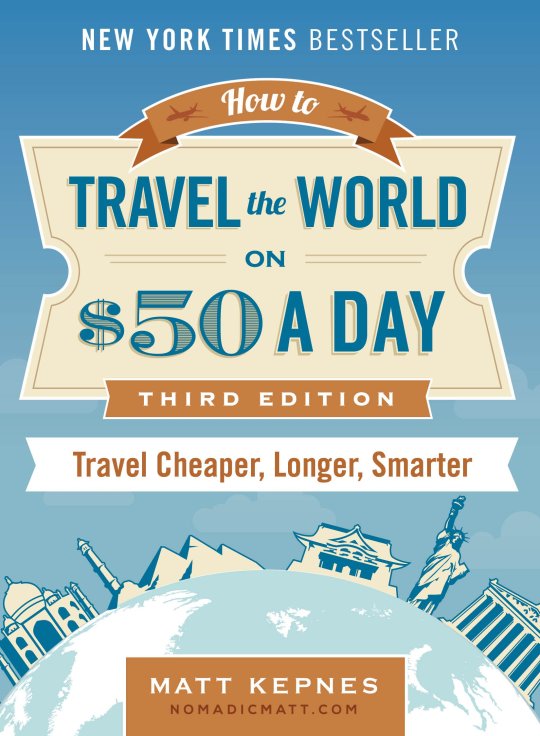
My New York Times best-selling paperback guide to world travel will teach you how to master the art of travel save money, get off the beaten path, and have a more local, richer travel experiences.
Click here to learn more about the book and pick up a copy today!
Book Your Trip: Logistical Tips and Tricks
Book Your Flight
Find a cheap flight by using Skyscanner or Momondo. They are my two favorite search engines because they search websites and airlines around the globe so you always know no stone is left unturned.
Book Your Accommodation
You can book your hostel with Hostelworld as they have the largest inventory. If you want to stay somewhere other than a hostel, use Booking.com as they consistently return the cheapest rates for guesthouses and cheap hotels. I use them all the time.
Don’t Forget Travel Insurance
Travel insurance will protect you against illness, injury, theft, and cancellations. It’s comprehensive protection in case anything goes wrong. I never go on a trip without it as I’ve had to use it many times in the past. I’ve been using World Nomads for ten years. My favorite companies that offer the best service and value are:
World Nomads (for everyone below 70)
Insure My Trip (for those over 70)
Looking for the best companies to save money with?
Check out my resource page for the best companies to use when you travel! I list all the ones I use to save money when I travel – and that will save you time and money too!
The post 12 Ways to Be Prepared for Anything While Traveling appeared first on Nomadic Matt's Travel Site.





Source link
Read the full article
0 notes
Text
17 Things to See and Do in Taiwan


Posted: 9/3/2019 | September 3rd, 2019
I used to live in Taiwan for a few months as an English teacher. I loved the time there and have always felt the country was really under appreciated. So, in this is a guest post by Carrie Kellenberger from My Several Worlds and an expat living in Taiwan for ten years, she lists out all the amazing things you should see and do there.
Every country in Asia is beautiful, but Taiwan is special for many reasons. The people are warm and hospitable. In March 2019, Taiwan was listed as the happiest place in East Asia.
While it might be a small island, you would be amazed at the never-ending variety of sights and fun things to do here. With over a hundred mountain peaks above 3,000 meters, over a hundred hot springs scattered around the island, both golden and black-sand beaches, nine national parks, world-class museums, glittering skyscrapers, stunning temples, and a huge number of night markets that are second to none, Taiwan has something that everyone can enjoy.
To this day, nearly 14 years after I moved here, I still think Taiwan is one of Asia’s best-kept travel destination.
Here are some of the best ways to spend your time in Taiwan:
1. Eat, Eat Eat!

The national pastime in Taiwan is eating. Taiwanese, both adults and children, are very work and study oriented, so their lifestyles demand healthy food that is available on the go. Moreover, there is always an abundance of fruits and vegetables, so visiting a local market can be a delight when you find out how cheap it is to eat fresh food.
As a result, Taiwan has become an epicurean’s playground. The food scene is an international smorgasbord of culinary delights, for every budget and almost every diet.
Night Markets
While there are five-star international restaurants of every variety throughout the country, the night markets are where the real gastronomes go. They promise to keep your belly full while your wallet remains relatively unscathed.
There are over 30 night markets in Taipei, New Taipei, and Keelung (and over 70 night markets across Taiwan). If you’re not sure which one to choose, visit this list of night markets in Taiwan and take your pick. My personal favorites are Shilin, Keelung, and Roahe Street in Taipei.
Here are a few things you should try:
Xiao long bao, also known as soup dumplings, a favorite staple food here. They are made out of a thin pastry folded into a type of bag that is then stuffed full with a meat-and-vegetable mixture and a tiny amount of soup, then garnished with raw ginger and soy sauce. Biting into one of these is a flavor explosion in your mouth. Plenty of street vendors at night markets offer fresh xiao long bao for around $2 USD for a basket of 10-12. There is really no reason not to try them. I’ve yet to meet a visitor to Taiwan who hasn’t loved their xiao long bao experience. I promise you will not be disappointed.
Oyster vermicelli
Oyster omelets
Beef noodle soup
Deep-fried chicken
Tian bu la (a type of fish cake fried with coriander with a dash of pepper and spice)
Sweet Taiwanese sausage or BBQ on a stick
Stinky tofu
“Coffin bread” (a tasty bread bowl shaped like a coffin)
Pig’s blood cake (It’s made from pig’s blood, sticky rice and soy broth and tastes much better than it sounds, I promise!)
Shaved ice
Zhen zhu nai cha (Taiwanese bubble tea)
Taiwan Beer (it’s the most popular local beer)
No matter what you decide on, you’re sure to have a great meal at a low cost while experiencing Taiwanese culture at its very best. You’ll be amazed at what you can buy for dinner for just $5 USD! You’ll definitely find some things that you hate, but you’ll also find things that you’ll love. It’s all part of the experience, right?
2. Visit a Taiwanese Teahouse

Tea culture in Taiwan is wonderful, and there are many options for tea lovers.
Maokong Gondola – This gondola will whisk you four kilometers to a mountain peak in a glass-bottomed cable car, from which you can view the tea plantations built into the side of the mountain as you zoom up. You can catch it at the Taipei Zoo MRT station; a ride costs 120 NT ($4 USD) each way. Once you’re at the top, there are several winding paths for a pleasant mountaintop stroll and a great selection of teahouses to choose from when you’re ready to enjoy a cup of fresh mountain tea.
Jiufen – If you’re heading out of Taipei, Jiufen is one of Taiwan’s most popular tourist destinations, owing to its appearance in the Studio Ghibli film Spirited Away. This seaside mountain village offers some terrific shopping opportunities, as well as all the different kinds of foods you see in the movie. It’s one of my favorite places, because it is also home to some beautiful teahouses in the most glorious setting. Imagine sitting at the top of a mountain, looking out over the ocean in the comfort of a traditional tea house. It is truly a magical experience, especially if you can get there for sunset. Go on a weekday to avoid the large weekend crowds.
Jwu Jiu Teahouse – If you make it as far south as Chiayi, be sure to find Jwu Jiu Teahouse, a hidden gem that is like taking a step back into the past. Jwu Jiu is a traditional wooden teahouse set above enormous stone ponds filled with hundreds of giant, brightly colored koi. Feed the fish while sipping on your tea, and enjoy some traditional dim sum in the loveliest setting you’ve ever seen. The grounds belong to a local family, and the teahouse uses a well that is over a century old, in which the water still runs deep and pure. The owner has kept most of the original structures and bricks, plus a hundred-year-old Osmanthus tree, which is associated with many traditions in China and Taiwan. If you’re a history buff, you’ll enjoy the teahouse’s long history, displayed with pride and obvious care.
3. Check out the Northern Coastline

Head to the coast for some incredible lunar-like landscapes at Yehliu Geopark. There are some unique, otherworldly rock formations, including one that looks like Queen Elizabeth (though it took over 4,000 years to form) that are a popular tourist attraction. Try to get there early to beat the crowds.
4. Hit the Beaches
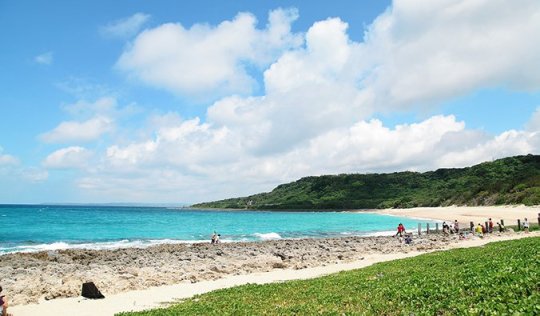
The beaches of Kenting on the southern tip of the island offer fun in the sun. White Sand Bay is the most popular and a great place to soak up the sun, swim, snorkel, or even go diving (just keep an eye out for jellyfish!). Other great beaches are South Bay and Little Bali Bay.
5. Soak in the Hot Springs

Taipei has its very own active volcano in its backyard, and because of the volcanic activity in the area, Beitou Hot Springs enjoys a steady stream of visitors and locals who love to bathe in its healthy waters. Prices start around 40 NT ($1.30 USD) per person for a soak in the hot springs, making it a very affordable choice for anyone looking for some R&R.
6. Go Island Hopping

The beautiful islands of Penghu just off Taiwan’s western coastline will delight your sense of wanderlust and are especially well known for their golden beaches. This island archipelago has islands that are all distinct.
Boats will drop you off at one island for a few hours and then take you to the next one, so you can literally go from snorkeling to observing sea turtles to wandering through traditional aboriginal villages made out of coral in a single day.
7. See Old Taiwan

Two groups of islands that make up the Kinmen Archipelago off the west coast of Taiwan, just a couple miles from mainland China — and they are old Taiwan at its best. Here you’ll be able to see some traditional architecture, and there are also insightful museums that highlight the ongoing tensions between the People’s Republic and Taiwan.
8. Get Off the Beaten Track on Orchid Island and Green Island

Located just off the southeastern coast, these lush islands are a treat to visit. Here you’ll find hiking, swimming, diving, and amazing hot springs. You can also get further off the beaten path and have an adventure by renting a scooter to traveling around the islands yourself!
9. Explore the Green Mountains

Grab a scooter and head up into the green mountains, which extend over five ranges the length of the island. If you want to stretch your legs, climb to the summit of beautiful Jade Mountain and watch the sunrise; this beautiful peak is almost 4,000 meters above sea level, making Taiwan the world’s fourth-highest island.
10. Visit Wuling Peak on Hehuan Mountain

If you’re still craving some climbing and hiking, head to Wuling Peak on Hehuan Mountain, around 3,275 meters above sea level, making it another good hike for anyone looking to spend more time outdoors. But what really makes this place special is that the peak is so high, you can look down into a sea of clouds below!
11. Go Hiking in Taroko National Park

Ready for another city break? This national park offers visitors a chance to hike through mountainous terrain and gorges, and you can even stop to dip your feet in swiftly flowing mountain rivers. Covering just under 100,000 hectares, it’s one of only nine national parks in Taiwan. Admission is free.
12. Head East

To really enjoy Taiwan’s majestic beauty, don’t forget Taiwan’s eastern coastline. The east coast highway has some of the most dramatic coastal scenery in the world, from plunging sea cliffs and splashing surf to beaches, nature reserves, and rural towns a world away from the big city.
13. Witness Some Chaos

Check out the feeding frenzy of the markets in Taipei, or enjoy a stroll around cool Ximending, the gay district and Taipei’s answer to Tokyo’s Shibuya. Ximending boasts a massive outdoor plaza behind the Red House (a well-known cultural landmark) and a pedestrian shopping zone filled with the latest fashion trends, coffee shops, restaurants, and local artisans.
Give yourself bonus points for checking out all the super cool graffiti; you won’t find it on the main thoroughfares, but if you venture onto some of the smaller side streets, you’ll soon find yourself in world of brightly decorated alleys and lanes.
14. See Tianhou Temple

While you’re in Ximending, it’s worth stopping by one of the oldest temples in the city, Tianhou (also known as the Ximending Mazu Temple, after the in-house deity Mazu, goddess of the sea). Around since 1746, it’s one of three major temples in Taiwan from the Qing period. It’s located on a main thoroughfare — but it’s very easy to miss the entrance.
Stepping through the entrance to this beautiful Taoist temple filled with mythological creatures, smoky incense, lucky goldfish, and people paying respect to the gods is truly a surreal experience. You’d never know this quiet oasis is in one of the busiest areas of Taipei!
15. Explore Fo Guang Shan Monastery

If you have your own ride in Kaohsiung, I strongly encourage you to stop by Fo Guang Shan Monastery and pay homage to the monks that live there. An ultra-Zen monastery open to the public, the complex is massive and stunning, leading to the Great Path of Buddhahood, a broad pathway flanked by eight identical pagodas.
You can explore each as you walk your way up to the Big Buddha, the highest seated bronze Buddha in the world. I’ve been to many temples and monasteries in my lifetime, but this one takes the cake.
16. Visit a Taiwanese Aboriginal Village

There are many knowledgeable local guides that can introduce you to the aboriginal way of life in Taiwan. The Formosa Aboriginal Culture Village near Sun Moon Lake is the most popular destination to learn more, but it’s certainly not the only one — there are lots of villages to choose from.
17. Take Part in the Pingxi Lantern Festival

One of the coolest events in Taiwan, the Pingxi Lantern Festival involves releasing hundreds of paper lanterns into the sky. (Many newlyweds also include this meaningful tradition as a part of their wedding celebration.) If you don’t want to brave the crowds, you can easily purchase a lantern and light one on any of Taiwan’s beaches.
Taiwan is very environmentally friendly, so make sure you go with the eco-friendly paper lantern options that disintegrate, leaving no residue, and don’t cause fires. The company My Taiwan Tour also currently offers biodegradable paper lantern tours in Shifen.
***
There are many things about Taiwan that make it an incredible place to live; it’s easy to take some of those things for granted once you’ve been here for a while. I frequently hear that people think Taiwan is very Westernized, and while I agree that it is to some extent, there are still plenty of authentic Taiwanese experiences to be had!
Taiwan is and continues to be an unexpected travel destination that continues to delight visitors to this day. There is no place like it!
Canadian expat Carrie Kellenberger has been living in Asia since 2003. She moved to Taiwan in 2006 and became a permanent resident in 2012. She loves entertaining guests and travelers to Taiwan. You can read about her adventures and life there at her blog, My Several Worlds.
Book Your Trip to Taiwan: Logistical Tips and Tricks
Book Your Flight
Find a cheap flight by using Skyscanner or Momondo. They are my two favorite search engines because they search websites and airlines around the globe so you always know no stone is left unturned.
Book Your Accommodation
You can book your hostel with Hostelworld. If you want to stay elsewhere, use Booking.com as they consistently return the cheapest rates for guesthouses and cheap hotels. I use them all the time. My favorite places to stay in Taipei are:
Formosa 101 – This hostel is located right near the Taipei Tower and the Tonghua Night Market. They offer free breakfast and have a laid back lounge for relaxing.
Meander Taipei – The staff here is really helpful and the beds are comfy. They have free breakfast as well as other daily activities available.
Don’t Forget Travel Insurance
Travel insurance will protect you against illness, injury, theft, and cancellations. It’s comprehensive protection in case anything goes wrong. I never go on a trip without it as I’ve had to use it many times in the past. I’ve been using World Nomads for ten years. My favorite companies that offer the best service and value are:
World Nomads (for everyone below 70)
Insure My Trip (for those over 70)
Looking for the best companies to save money with?
Check out my resource page for the best companies to use when you travel! I list all the ones I use to save money when I travel – and I think will help you too!
Photo credits: 9 – David Hsu, 15 – Yi Chen, 16 – Huicheng1967
The post 17 Things to See and Do in Taiwan appeared first on Nomadic Matt's Travel Site.





Source link
Read the full article
0 notes
Text
27 Golden Rules For Becoming a Master Traveler
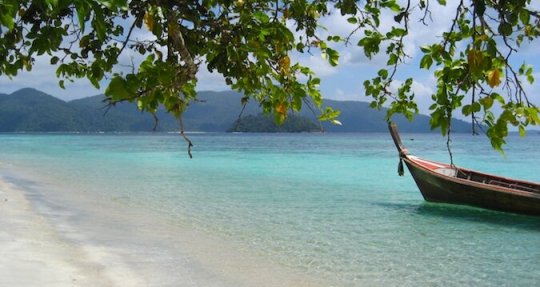

Updated: 9/2/2019 | September 2nd, 2019
Every industry has its own “best practices” — proven rules and standards that guide the industry and the people in it. Travel is no different. There are many “rules to live by” that can help us navigate the unknown world with fewer mistakes.
I have my own golden travel rules.
Over the past ten years, I’ve learned a lot of tips and tricks that have helped me thrive when I travel. When I first set out in 2006, I made a lot of mistakes. (Ok, I still make some mistakes.)
And that’s not a bad thing. If you don’t make mistakes, you aren’t trying new things and pushing yourself out of your comfort zone.
Mistakes are going to happen.
But, over the years, I’ve developed a list of 27 golden rules for travel. These guidelines help me save money, make friends, stay safe, and fit into the local culture.
If you follow them, you’ll become a master traveler, able to travel the world with swashbuckling zeal and expert ninja-like knowledge… all without breaking the bank so you can keep cutting a path forward through the world for longer:
1. Be adventurous – You only live once. You’re going to get chances to do wild things you’ve never dreamed of doing when you travel. Don’t hold back. Count to three, say “screw it,” and take the leap. You didn’t come this far for nothing. Say yes when someone asks you to go rock climbing, salsa dancing, spelunking, or try the world’s hottest pepper despite not liking spicy food.
There’s no one around to judge you. No one cares what you do. No rumors will be spread. Push yourself to do something new and daring at least one.
2. Get a no-fee ATM card – Why give your money to the banks? Get an ATM card that doesn’t charge any fees and use that extra money for more traveling. Over the long term those $2-5 charges really add up. I use Charles Schwab as my bank, but you can also find many others that offer no-fee accounts — or use a one that is part of the Global ATM Alliance, and pay no fees within that network.
This article can show you how to avoid bank fees when you travel (and will give you a list of suggested cards too).
3. Get a rewards credit card – Why pay for travel when you can get it for free? Use a travel rewards credit card to earn points and miles that can be redeemed for free travel.
You’re already spending the money anyway so why not get rewarded for it?
Travel credit cards come with tons of perks and huge bonuses that can be redeemed for free flights right away. Plus, they get you the best exchange rate on your purchases.
Having one is an absolute must.
Want to know how I get hundreds of thousands of points per year and fly for free? Sign up for my free primer on the art of travel hacking and I’ll show you.
4. Always carry backups – Always carry a backup bank and credit card in case one is lost, stolen, or hacked. That way while you are fixing the issue, you still have access to your money. Instead of the problem crippling your trip, it merely is an annoyance. This has happened to me before and, I can ensure you, you’ll be thankful you followed this advice!
5. Only carry what you need – When you leave to go out for the day, only care the cash you need and one credit card. You don’t want to get robbed and lose everything. Leave the backups and extra locked back at your hostel!
6. Join a frequent flier program – Get rewarded for all of those flights you’ll be taking by joining a frequent flier program. That way you’ll earn miles, perks for flying, and free flights. Miles are like money — and you wouldn’t waste money, would you? No! So, sign up for a loyalty program, and collect points. Even if it takes you years to get a free flight, at least you are not being wasteful!
7. Travel alone at least once – Few things are as liberating as solo travel. As a solo traveler, you’re free to do whatever you want. When you travel solo, the world is your oyster. You’re free to do whatever you want, whenever you want. To me, it’s the purest sense of freedom there is.
But beyond that sense of freedom, solo travel actually teaches you a lot about yourself. Travel is an amazing personal development tool after all, and solo travel is one of the best ways to learn and grow and challenge yourself.
Without anyone around you, you have to solve the problems you face on the road. You have to figure out how to get from point A to B, deal with people who speak a different language, get comfortable eating alone, find things to do, and work out problems that arise. It’s you and your wits. That forces you to grow in ways you won’t in the comfort of your home or with a group.
While it won’t be for everyone, I still encourage everyone to try solo travel at least once. Even if you don’t love it, you’ll learn a ton about yourself in the process.
8. Learn basic phrases – Locals don’t expect you to be an expert in the local language, but learning a few basic phrases will go a long way to endearing you and making them go the extra mile for you. It will bring a smile to their face that you tried! “Hello,” “how are you?” and “thank you” go a long, long way no matter where you go.
9. Stay in hostels – Get to know other travelers and experience the communal spirit of traveling by staying in hostels a few times. They aren’t all the dirty party places you see in movies. Most hostels are very clean, offer breakfast, have comfy beds and Wi-Fi, organize events, and know the local area very well. They also aren’t just for young backpackers; you’ll find people of all ages (and even some families) staying there. Try them out. You may like it.
Here is a list of the best hostels in the world to get you started!
10. Use tourist boards – Local tourist offices are a wealth of knowledge. When you get to a new destination, visit the tourist office and ask the staff an insane number of questions about the place. They exist solely to help you get the most of your visit and it’s their job to know everything and everything about a place. Plus, they often have tons of discounts not found anywhere else.
Visiting one is often one of the first things I do in a new city.
11. Try new foods – Culture is often best experienced through food. Don’t be afraid to try new things. Get out of your comfort zone and experiment. You might actually like it (those fried caterpillars in Zambia were delicious!).
12. Be flexible with your plans – Travel is a series of happy accidents with way leading to way. Don’t skip going to that random city with the friends you just met because your itinerary says something different. You’ll regret it.
Go with the flow and be open to new things.
This will make your travels a lot more stress-free.
12. Pack light – Take it from a former over-packer: you never need half the stuff you take. Put everything you think you need in a pile and then remove half of it. The lighter you travel, the easier you travel.
Here’s our suggested packing lists:
What I Pack for My Travels: Your Packing Guide for 2019
The Ultimate Packing List for Female Travelers
14. Take extra money – Something always happens that you never planned for that will cost you extra money. I never thought I would fly last-minute to Fiji, need to replace my camera in Italy, or buy an extra iPhone cable in Australia. Always take extra money just in case. You may not need it, but you don’t want to be without a little extra when something bad happens.
When you start planning for your trip, set aside a $300-500 emergency slush fund in for accidents.
15. Get lost – Meander through a new city without a map. Get lost — because in the end, you aren’t really getting lost, you’re just discovering new experiences. So put down the map and wander. Eventually, you’ll find your way.
16. Call home – Your parents miss you. Don’t forget to call and say hello.
17. Get a phone — It will be easier to stay in touch with friends (and call home), meet up with other travelers, and contact hostels with a phone. SIM cards and prepaid phones are cheap, so there’s no excuse not to stay connected.
But don’t be glued to your phone. I see too many people hooked on their phone these days. But it is still a good idea to carry one for emergencies, especially when they are so accessible and affordable now.
18. Travel slow – This isn’t a race or a competition. I know you want to get a lot in with your limited time, but you see a lot more when you see a lot less. Travel slow and experience each place. Don’t race from train station to station; that will set you up for a stressful, unenjoyable time. With travel, less is more.
19. Live somewhere once – Stop at least once. Get to know a place. Learn the language. Make local friends. Explore. Become the local. Living in a foreign place gives you a different perspective on life and a real sense of what it’s like to be an outsider.
Plus, living a foreign place and surviving will help you gain a lot of confidence.
20. Avoid taxis – They just cost a lot. Don’t use them unless you don’t have any other option.
21. Bring a reusable water bottle – Not only are all those disposable plastic water bottles bad for the environment but the cost adds up over time. A water bottle here, a water bottle there, and you’ve spent $50 on water alone. Get a reusable bottle and drink the tap water in conjunction with a SteriPen or LifeStraw water purifier.
22. Buy travel insurance – You never know what could happen on the road — but something always does. I’ve had to deal with lost baggage, broken gear, delayed flights, and even some pretty serious injuries. Without travel insurance, I would have not only had to pay out of pocket for these expenses but I would have been left to navigate them alone.
Buy travel insurance so that if you’re injured or you break your camera, you’re covered. Plus, you’re friends and family will be able to relax knowing that, should something happen, you’re covered. It’s only a few dollars a day. It’s worth the peace of mind.
Here’s the link to our resource page with all our articles on the subject!
23. Bring basic first-aid – Cuts and scrapes happen, and you can get what you need most anywhere in the world, but it’s still good to carry bandages, antibacterial cream, and some hydrocortisone cream in your first aid kit just in case. Also, carry duct tape — you’ll never know when it’ll come in handy.
Here are some tips on how to pack a suggested first add kit.
24. Get off the beaten path – London, Paris, and the temples of Kyoto are all amazing for a reason, but get off the beaten path, go away from the crowds, and explore on your own. Find something new, stick out, meet the locals, and discover. The road less traveled is usually a good one.
25. Take photos of your friends – Years from now, you’ll want to look back at your younger self and see all the people who changed your life. Nostalgia can be a wonderful thing. Make sure you take photos of your friends. You’ll want them later.
26. Use the sharing economy – The rise of the sharing economy has made backpacking so much easier and cheaper. From ridesharing, house sharing, and meetup websites, there are so many ways you can get off the tourist trail and experience day-to-day life with locals! Here are some suggested websites:
Couchsurfing (free shared accommodation with locals)
Airbnb (paid accommodation with locals)
BlaBlaCar (rideshare app)
EatWith (share a meal with local cooks)
Vayable (for finding local tours and activities)
And finally, the most important tip of them all….
27. Ignore all my tips and do whatever you want – It’s your trip. Go where you want, when you want, and for how long you want. Don’t worry about this or that. Make mistakes. Learn. Make more mistakes. Have fun and become a better traveler. At the end of the day, you won’t look back and think “if only I had more miles” but instead “damn, that was a lot of fun.”
So get out there and have some fun!
You deserve it.
How to Travel the World on $50 a Day

My New York Times best-selling paperback guide to world travel will teach you how to master the art of travel save money, get off the beaten path, and have a more local, richer travel experiences. It will teach you everything you need to know about travel!
Click here to learn more about the book and how you can start reading it today!
Book Your Trip: Logistical Tips and Tricks
Book Your Flight
Find a cheap flight by using Skyscanner or Momondo. They are my two favorite search engines because they search websites and airlines around the globe so you always know no stone is left unturned.
Book Your Accommodation
You can book your hostel with Hostelworld as they have the largest inventory. If you want to stay somewhere other than a hostel, use Booking.com as they consistently return the cheapest rates for guesthouses and cheap hotels. I use them all the time.
Don’t Forget Travel Insurance
Travel insurance will protect you against illness, injury, theft, and cancellations. It’s comprehensive protection in case anything goes wrong. I never go on a trip without it as I’ve had to use it many times in the past. I’ve been using World Nomads for ten years. My favorite companies that offer the best service and value are:
World Nomads (for everyone below 70)
Insure My Trip (for those over 70)
Looking for the best companies to save money with?
Check out my resource page for the best companies to use when you travel! I list all the ones I use to save money when I travel – and that will save you time and money too!
The post 27 Golden Rules For Becoming a Master Traveler appeared first on Nomadic Matt's Travel Site.





Source link
Read the full article
0 notes
Text
How to Avoid Paying Bank Fees While Traveling


Updated: 8/22/2019 | August 22nd, 2019
Saving money for travel is one of the biggest obstacles that keeps people rom realizing their travel dreams.
Yet, all too often, I see travelers throwing money away in avoidable bank fees.
Banking overseas is more than just putting your card in an ATM and taking out money. There is a lot more to consider — especially if you want to become a savvy traveler!
When you travel on a budget, banking overseas involves knowing three things:
How to avoid paying bank fees.
How to eliminate foreign transaction charges.
How to get a good exchange rate.
I know too many people who travel abroad and end up paying obscene ATM fees and credit card transaction fees. All because they didn’t do their research and plan ahead.
In 2019, there’s absolutely no need for it. You didn’t save up all this money in order to give it the banks, right? I know I didn’t. I want to keep it all for myself because every avoided fee is more money for food, drinks, and activities on the road!
Want to save more money on your next trip abroad? Here is how you eliminate ALL bank fees when you travel in 5 easy steps!
Table of Contents
Step 1: Eliminate ATM Fees
Step 2: Avoid Credit Card Fees
Step 3: Minimize the Exchange Rate “Penalty”
Step 4: Don’t Change Money at Airports
Step 5: Always Pick the Local Currency
Step 6: Don’t Get Currency at Home (and Skip Those Foreign Currency Cards!)
1. Eliminate ATM Fees
ATM fees can really add up — especially if you’re traveling for weeks or months at a time. Let’s think about it: While you’re on the road, you will probably withdraw money from an ATM twice a week. Fees vary around the world, but on average you end up paying around $3-5 USD per withdrawal. That is $10 per week, $40 per month, or $520 per year! Do you know how many days you could spend in Southeast Asia for that amount? Almost 3 weeks!
Even if you only use the ATM half the time, that’s still $260 USD per year. And most travelers I know go to the ATM even more than twice a week, which only increases the amount in fees they pay. Why give banks money you need for travel? You did a lot of work saving your money — don’t waste it by giving it to a bank.
To help you avoid fees, here are four things you’ll want to do on your next trip to eliminate those pesky fees:
First, pick a bank in the Global ATM Alliance. This is a network of large banks that have come together and waived fees and allows for free ATM withdrawals. While they have the high fees ($5 USD per withdrawal) for banks outside their network, by using partner ATMs you can avoid ATM charges entirely.
Below is a list of major banks in this alliance:
Bank of America (United States)
Barclays (England, Wales, Spain, Portugal, Gibraltar and certain countries in Africa)
BNP Paribas (France, Ukraine, Turkey, Poland, Morocco, Italy, New Caledonia, Réunion, Guyane, Guadeloupe, Martinique, and Luxembourg)
Deutsche Bank (Germany, Poland, Czech Republic, Spain, Portugal and Italy)
Banca Nazionale del Lavoro (Italy)
Scotiabank (Canada, Caribbean, Peru, Chile, and Mexico)
Westpac (Australia, New Zealand, Fiji, Vanuatu, Cook Islands, Samoa, Tonga, Papua New Guinea, and Solomon Islands)
Be sure to check with your local bank on specific coverage areas. There are some exceptions, i.e., if you use your Barclays card in one country, there might not be a fee, but in another, there may be. Other fees, such as an international transaction or foreign currency fee, may also still apply so double-check before you go!
Note: Bank of America charges a 3% foreign transaction fee on all withdrawals not in USD.
Secondly, if you are a US resident, the best bank to use is Charles Schwab.
Why?
Charles Schwab has no fees and reimburses all your ATM fees at the end of each month. You will need to open a high-yield checking account in order to qualify, but there is no minimum deposit required and no monthly service fee. Their ATM card can be used in any bank machine around the world, and you’ll never pay a fee. This is my primary bank card and I’ve been using it for years. Since getting it, I’ve avoided all ATM fees. It’s literally saved me thousands of dollars over the past decade of traveling the world.
Third, get a low-fee card. I use HSBC as my backup because HSBC has ATMs all over the world and charges only $2.50 USD per ATM transaction when you use a non-HSBC ATM. While it’s not as good as zero, it’s still better than what a lot of other banks charge. Additionally, Capital One doesn’t charge any withdrawal fees, but you do have to pay any fees charged by the local bank.
Finally, ask your local bank or credit union. Not charging ATM fees has become a widespread practice over the last few years, so make sure to ask your local bank.
Here are some suggested ATM cards for non-US travelers:
Canada: Scotia or Tangerine are a part of the Global ATM Alliance.
Australia: ING, Citibank, or HSBC have no feed cards.
UK: UMonzo or Starling let you avoid ATM fees abroad.
If you are looking for other ways to cut wasteful expenses on the road, visit this collection of all my best tips for further money savings.
2. Avoid Credit Card Fees
The next major fee we need to get rid of is the credit card foreign transaction fee. Most credit cards charge a 3% fee on purchases made overseas. That can add up since most of us use our credit card for everything. It’s become a lot more common for credit cards to waive that fee since if you use your card a lot overseas, you’ll probably use it a lot anywhere. My favorite no overseas transaction fee cards are the Chase Sapphire Preferred, Barclay Arrival Plus, Capital One, and Citi Premier. (For more suggestions, you can find all my favorite travel cards here.)
If you use these cards overseas, you won’t pay 3% and you’ll save a lot of money!
For non-US citizens, check the following websites that list cards that might not charge any overseas fees:
Australian Frequent Flyer (Australia)
Credit Cards UK (UK)
Candian Kilometers (Canada)
3. Minimize the Exchange Rate “Penalty”
Every time you use your card overseas, your local bank coverts the transaction into your local currency for billing purposes and takes a little off the top for doing so. Thus the official rate you see online is not what you actually get. That’s the interbank rate, and unless you become a major bank, you’re not going to get that rate. All we can do is get as close as we can to that rate. To avoid being on the real losing end of conversion, follow the following tips:
Use a credit card — Credit card companies get the best rates. Using a credit card will get you an exchange rate closest to the official interbank currency rate so avoid an ATM or cash if you can.
Use an ATM — ATMs offer the best exchange rate after credit cards. They aren’t as good as credit cards since commercial banks take a little more off the top, but it’s much better than exchanging cash. Money exchange offices offer the worst rates because they are so far down the food chain, they can’t get the best exchange rate (plus, they usually charge a commission as well).
Don’t use ATMs in weird locations — Using those ATMs you find in hotels, hostels, local 7-11s, or some other random place is a bad idea. They’re convenient, but you’ll pay for that convenience. They always charge high ATM fees and offer horrible conversion rates. Skip those ATMs and find a major bank.
Here’s a video that highlights just how sneaky these companies can be:
4. Don’t Change Money at Airports
Most exchange bureaus in airports are so far down the financial food chain they don’t have the clout to offer good exchange rates. The rates you see at airports are the worst — never, ever use an exchange bureau there unless you absolutely have to. Another tip: avoid using the company Travelex at all costs — they have the worst rates and fees. Never, never use them. Avoid their ATMs too!
5. Always Pick the Local Currency
When you use your credit card abroad, you will often be given the option to be charged in your home currency (i.e., instead of being charged in euros, they will charge you in US dollars). Never say yes. The rate at which they are converting the currency is always worse than the rate your bank will give you. Pick the local currency and let your credit card company make the conversion. You’ll get a better rate and save some money in the process.
6. Don’t Get Currency at Home (and Skip Foreign Currency Cards!)
While buying currency at home might seem like a good idea, you’ll end up getting a worse exchange rate. Unless you are 100% sure you’ll need cash right on arrival, avoid exchanging money in your home country. Airports all have ATMs where you can withdraw money. You can get a much better rate when you do that. Don’t get currency before you go.
Additionally, avoid any “foreign currency cards” (like those offered from currency exchange companies) where you can pre-load money at a set exchange rate. The rates given are also terrible and they often have all sorts of additional fees. Doing this basically is trying to predict the exchange rate. You’re hoping it doesn’t get worse when you travel but what if it gets better? You don’t know either way. That’s exactly why you shouldn’t get these cards.
***
Bank fees can add up to some serious money over the course of a long trip. If you want to save money, you need to be proactive when it comes to banking and currency exchanges. A little planning can go a long way and save you a ton of money over the weeks, months, and years of your travels.
I see too many travelers visit the ATM all the time without paying attention to the latest exchange rates. You’re on the losing end of the stick that way. Be smart and bank smart. I haven’t paid a bank fee while traveling the world in over ten years and you shouldn’t either.
And with these simple tips, you’ll never have to again.
WANT MORE? HERE ARE OTHER IMPORTANT TRAVEL TIPS TO HELP YOU SAVE MONEY:
How to pick the travel credit card for your trip
How to save money while you travel
12 things you should NOT do when you travel
How to Travel the World on $50 a Day
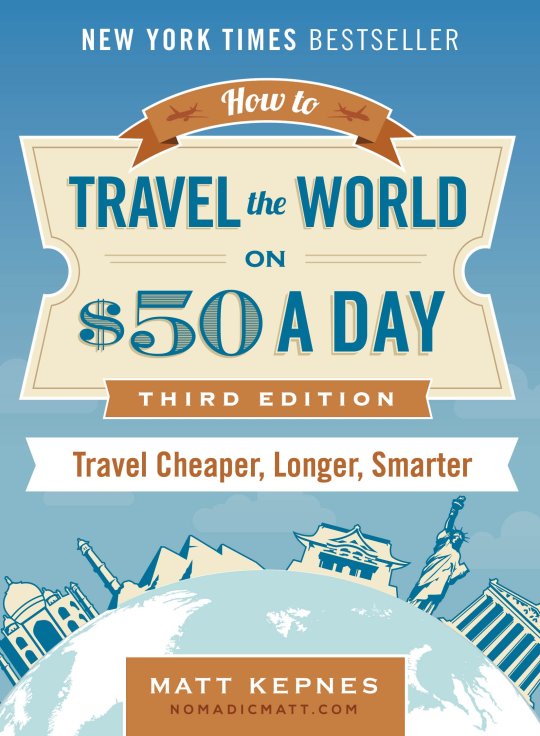
My New York Times best-selling paperback guide to world travel will teach you how to master the art of travel save money, get off the beaten path, and have a more local, richer travel experiences. It has everything you need to know about the book
Click here to learn more about the book and get your copy today!
Book Your Trip: Logistical Tips and Tricks
Book Your Flight
Find a cheap flight by using Skyscanner or Momondo. They are my two favorite search engines because they search websites and airlines around the globe so you always know no stone is left unturned.
Book Your Accommodation
You can book your hostel with Hostelworld as they have the largest inventory. If you want to stay somewhere other than a hostel, use Booking.com as they consistently return the cheapest rates for guesthouses and cheap hotels. I use them all the time.
Don’t Forget Travel Insurance
Travel insurance will protect you against illness, injury, theft, and cancellations. It’s comprehensive protection in case anything goes wrong. I never go on a trip without it as I’ve had to use it many times in the past. I’ve been using World Nomads for ten years. My favorite companies that offer the best service and value are:
World Nomads (for everyone below 70)
Insure My Trip (for those over 70)
Looking for the best companies to save money with?
Check out my resource page for the best companies to use when you travel! I list all the ones I use to save money when I travel – and that will save you time and money too!
The post How to Avoid Paying Bank Fees While Traveling appeared first on Nomadic Matt's Travel Site.





Source link
Read the full article
0 notes
Text
Do You Need Medical Evacuation Insurance?


Posted: 8/29/19 | August 29th, 2019
While most budget travelers are content with a standard travel insurance package, today I wanted to talk about one specific aspect that I get asked about a lot: buying extra medical evacuation insurance.
When I first started roaming the world, I assumed that standard travel insurance would cover the cost of getting back home should I get injured abroad. Isn’t that what their “medical evacuation” coverage does?
I was shocked to discover that, more often than not, that isn’t the case.
Turns out, just because you get injured and require medical transportation doesn’t mean you get sent home.
If you read the fine print, most travel insurance companies only cover your medical transport to the “best” medical facility near where you are. This is what they call the “nearest acceptable facility.”
They decide where you go, not you.
They decide what the best facility is.
They decide what is suitable.
And once your travel insurance company sends you to a hospital, they have fulfilled their obligation to you. That means that if you’re not sent home, you could be liable to then cover the cost of getting home — which can be a lot of money.
Now, this is not to say that “regular” travel insurance is bad. It just means that people think it covers a lot more than it does and are often upset when they find out otherwise. I mean, I love travel insurance (I never leave home without it), but it’s important to know its limitations. Always read the fine print!
This is where comprehensive medical evacuation insurance can come in handy in addition to your existing travel insurance plan.
What is Medical Evacuation Insurance?
First, let’s get one thing clear: Medical evacuation insurance is not the exact same thing as travel insurance (and vice versa).
Of course, travel insurance generally includes medical evacuation insurance, but travel insurance is specifically designed to protect travelers from financial loss in the event of trip interruptions and cancelations, as well as injuries while abroad.
Cut yourself on a rock while hiking? Travel insurance will help.
Baggage lost or delayed after a flight? Travel insurance will help.
Someone pickpocket your phone? Travel insurance will help.
For most travel and medical emergencies, travel insurance will suffice.
But where it often falls short is when you need to be repatriated.
Most travel insurance plans do include decent coverage for medical evacuation — but they only take you to the nearest facility that can handle your emergency. This means:
No guarantee of going home
No guarantee of going to the absolute best medical facility to assist you
No guarantee of someone on the ground to walk you through the process — you’re usually left to handle all of that on your own.
And for some people, that’s not good enough.
Why is Medical Evacuation Insurance So Important?
When I was stabbed in Colombia, I went to a local hospital. I was on my own, left to navigate the process with what little broken Spanish I knew. While I received basic medical care, it was not exactly the best in the world. I flew back to the US shortly after that to get the care I needed.
I was lucky that I didn’t require surgery and that I was able to handle the situation on my own. I didn’t necessarily need medical evacuation insurance for that incident.
But not everyone will be that lucky. Earthquakes, monsoons, hurricanes, floods, and fires do happen — and the list goes on.
Each and every year, 10 million travelers are hospitalized abroad — with over two million requiring medical transportation!
And should you need to be evacuated due to an injury, weather event, or political crisis, you definitely don’t want to be stuck with a pricey repatriation bill. After all, evacuation and transportation aren’t cheap. Costs for a medical evacuation or medical transfer can range from $30,000 to upwards of $200,000.
Yes, you read that right: $200,000!
Unless you have that kind of money lying around, you’ll want to make sure the insurance that you buy covers you for medical evacuation, transportation, transfers, and repatriation. You don’t want to be stranded at a foreign medical facility — especially if that facility doesn’t provide the degree of care that you need.
While these sorts of emergencies are rare, it’s much better to pay a small fee now than to risk going bankrupt because of an unexpected injury. Because $200,000 is a LOT of money!
Just as important as the financial argument for medical evacuation insurance is the fact that having comprehensive coverage gives you peace of mind. You and your loved ones can relax, knowing that, should the worst happen, you have a company there that is ready and able to help you get through it. The last thing you want on your vacation is to be fretting about the fine print on your insurance policy.
Over the past 10 years, I’ve had to deal with all sorts of hiccups on the road, from minor inconveniences, like a broken camera and lost baggage, to more serious situations, like when I burst my eardrum.
Take it from me: peace of mind is worth the price.
That’s why it’s important to be prepared.
That’s why more and more travelers are joining membership programs for comprehensive medical evacuation insurance.
Our Recommended Company
Medjet is a membership program that offers comprehensive medical transportation services all around the globe. It has 50 dispatch stations worldwide, with access to over 250 air ambulances. That means that as long you’re not in a warzone or country prohibited to travel by the US State Department, you will be able to receive the medical transport coverage and evacuation services that you need.
Medjet focuses solely on medical evacuation coverage, making it the go-to company for travelers concerned about medical evacuation and repatriation. All the travel pros I know use it.
Where most insurance companies will just take you to the nearest medical facility, Medjet will make sure you get home.
Additionally, Medjet will:
Allow you to choose what hospital or medical facility you want to go to.
Arrange medical transfer (regardless of medical necessity).
Provide service both within the US and abroad.
Initiate a security response and evacuation even if there is no government warning to do so.
However, it is also extremely affordable — I’m still a budget traveler after all! Medjet offers both short-term and annual plans. An annual membership can cost as little as $295 USD per year, which is amazing value if you’re an avid traveler.
If you’re looking for coverage that goes above and beyond what most companies offer, you’ll want to consider Medjet — especially if you’re concerned about the cost of a medical evacuation.
It’s also the perfect choice for anyone looking to do adventurous activities or travelers who are heading into a region where extreme weather events (such as hurricanes or floods), fires, or earthquakes are common.
***
Nobody likes to imagine something going wrong on their trip. But accidents and emergencies do happen. Make sure you have the evacuation insurance coverage you need on your next trip. You won’t regret it!
Book Your Trip: Logistical Tips and Tricks
Book Your Flight
Find a cheap flight by using Skyscanner or Momondo. They are my two favorite search engines because they search websites and airlines around the globe so you always know no stone is left unturned.
Book Your Accommodation
You can book your hostel with Hostelworld as they have the largest inventory. If you want to stay somewhere other than a hostel, use Booking.com as they consistently return the cheapest rates for guesthouses and cheap hotels. I use them all the time.
Don’t Forget Travel Insurance
Travel insurance will protect you against illness, injury, theft, and cancellations. It’s comprehensive protection in case anything goes wrong. I never go on a trip without it as I’ve had to use it many times in the past. I’ve been using World Nomads for ten years. My favorite companies that offer the best service and value are:
World Nomads (for everyone below 70)
Insure My Trip (for those over 70)
Looking for the best companies to save money with?
Check out my resource page for the best companies to use when you travel! I list all the ones I use to save money when I travel – and that will save you time and money too!
The post Do You Need Medical Evacuation Insurance? appeared first on Nomadic Matt's Travel Site.





Source link
Read the full article
0 notes
Text
What Does Travel Mean to You?


Updated: 8/5/2019 | August 5th, 2019
A few years ago, I went around the world and asked people what travel meant to them. As I travel the country on my current book tour and hear everyone’s reasons for travel, I’m reminded of that experience.
Travel means something different to every single person in the world.
There are a million and one reasons to travel. Many people travel the world to get the bug out of their system, or to check things off a list to say they’ve been there and done that. Some run to escape their problems. Some people travel simply to get drunk around the world.
For me, travel means many things. Travel is freedom. It’s about being able to do what I want and fill my day with excitement. Travel was an escape. Travel was “elsewhere”. That place where exciting things and people resided. It was escaping the Matrix to learn about the world, why people do what they do, and how they act. It’s about pushing myself to the limit and getting more comfortable in my own skin.
But I wondered what motivates other people to do the same.
I have my theories of course.
But I wanted to hear it from people directly.
So, during an extended trip, I asked people I met on the road one question:
“What does travel mean to you?”
And here is what they said:
***
I loved hearing everyone’s answers because it so accurately describes all the various reasons that push us to travel the world, learn about the people in it, and ourselves.
Now, tell me in the comments below:
What does travel mean to you?
Share what drives you.
P.S. – I just released a new book! It’s called “Ten Years a Nomad” and it’s about my ten years backpacking the world and the lessons I learned from it. It features tons of stories I’ve never told on this blog and is a book that delves into the why of travel! Click here to learn more, grab your copy today, and meet me on my book tour! This week I’ll be in Austin, Houston, Denver, and San Diego
Book Your Trip: Logistical Tips and Tricks
Book Your Flight
Find a cheap flight by using Skyscanner or Momondo. They are my two favorite search engines because they search websites and airlines around the globe so you always know no stone is left unturned.
Book Your Accommodation
You can book your hostel with Hostelworld as they have the largest inventory. If you want to stay somewhere other than a hostel, use Booking.com as they consistently return the cheapest rates for guesthouses and cheap hotels. I use them all the time.
Don’t Forget Travel Insurance
Travel insurance will protect you against illness, injury, theft, and cancellations. It’s comprehensive protection in case anything goes wrong. I never go on a trip without it as I’ve had to use it many times in the past. I’ve been using World Nomads for ten years. My favorite companies that offer the best service and value are:
World Nomads (for everyone below 70)
Insure My Trip (for those over 70)
Looking for the best companies to save money with?
Check out my resource page for the best companies to use when you travel! I list all the ones I use to save money when I travel – and that will save you time and money too!
The post What Does Travel Mean to You? appeared first on Nomadic Matt's Travel Site.





Source link
Read the full article
0 notes
Text
My 12 Favorite Cities in the World


Updated: 8/4/2019 | August 4th, 2019 (Orignally posted in 2011)
When you travel for a living, you get asked a lot of questions as you bounce from one hostel to another. The top one: what’s your favorite country?
The second most asked question: what’s your favorite city?
I’ve spent a long time traveling the world and have been to hundreds upon hundreds of cities in the world. There are so many that I love for many different reasons – some for art, some for history, some for the food, most for the people.
But, to me, the ones that stand out the most are the ones where I feel most at home. They are places I visit and feel connected too. Their energy and my energy match. I move around them with ease, I feel at one with the culture, and tempo of the city.
I think to myself “Yeah, I could live here.” Not just visit but live.
And, when I think that, then I know I’ve found a special place.
So what are my favorite cities in the world? Where are the places I feel that way? They are here:
My 12 Favorite Cities
Amsterdam
Paris
Bangkok
Stockholm
New York City
Chicago
Vancouver
Queenstown
Perth
Hong Kong
London
Reykjavik
1. Amsterdam
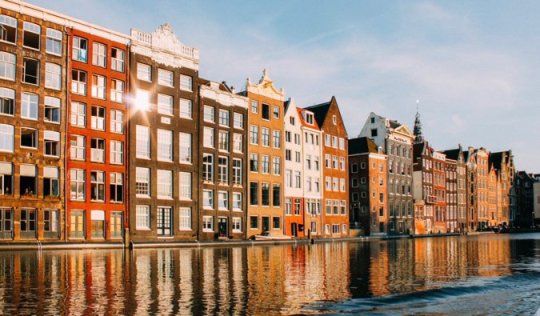
I can’t say exactly how many times I’ve been to Amsterdam, but it’s in the double digits. And, for a brief time at the end of 2006, I lived there as a professional poker player (Seriously. It’s one of the more interesting random facts about me!).
The fast-paced life, friendly locals, easy access to the rest of Europe, picturesque canals, and great architecture keep me coming back. Plus, it being Amsterdam and all, there are tons of weird and quirky things to see and do there too!
In some ways, Amsterdam reminds me of my hometown of Boston, which might be why I love it so much. The brick buildings, fast-moving people, austere vibe. It feels like home.
Favorite activity: Boating through the canals with friends.
Visiting Amsterdam? Check out my complete budget travel guide to Amsterdam! It’s hundreds of pages long and will help you plan the best trip there!
2. Paris

Ever since I stepped out on the Champs Elysées, I knew Paris was it. It was everything I dreamed it would be I was in love from the first moment. Sure, Paris is large and expensive and bursting with tourists. But what big city isn’t like that?
Paris is beautiful, vibrant, and filled with great food and history. Being here is like being in a real-life romantic comedy. I love the city so much I even moved there for a good chunk of 2019. It really does live up to all the hype, especially when you move away from the tourist areas and into the local places more.
Favorite activity: Picking up some good food at the market and having a picnic.
Get my complete budget travel guide to Paris and plan the perfect trip! It’s hundreds of pages long and will help you plan the best trip there!
3. Bangkok

I hated Bangkok the first few times I traveled there. It was simply a dirty, polluted city with no redeeming qualities. It wasn’t until I moved there that I fell in love with it.
Bangkok, it turns out, is an easy city to live in — there’s lots to do, plenty of events, great bars, wonderful food (nothing beats Thai street food), and even more wonderful people. It’s just a bad tourist city. There’s just not a lot to do there for a tourist. It’s a city you live in.
Living in Bangkok showed me that looks can be deceiving and that there is more to a city than what you see on the surface. You just need to be willing to look a little deeper.
And, when you do, you always find something special.
Favorite activity: Live music at Brick Bar or eating noodles at a street stall.
If you’re visiting Bangkok, check out my complete budget travel guide to Bangkok! It has everything I know about the city in one easy place.
4. Stockholm

I have a strong affinity for all things Scandinavian, and Stockholm is no exception. I’ve been there a handful of times over the years, and I even tried to move there years ago (it didn’t work out).
I think this city is one of the most beautiful I have ever seen. The reds and greens of the buildings have an Old World charm that rivals cities like Prague, and during the fall, the changing leaves only highlight that beauty.
Stockholm is also very historic, with a high quality of life, and the Swedes in the city are super friendly and welcoming. It’s not a cheap city to visit, but it’s worth every penny!
Favorite activity: Getting lost in the maze of historic streets in Gamla Stan.
Check out my budget travel guidebook to Stockholm and plan your trip today!
5. New York City

New York City is a place where dreams are made into reality and there is always something to do, something to see, or a new place to eat. The city is so multicultural that when I feel like I need to travel but I can’t, there’s an ethnic area of the city that will give me my fix.
I love NYC. It is the heart of the world to me. It is a non-stop place where you come to make it in the world. You can always find something to do, world-class food, people from all walks of life, and just a hustler vibe.
I spent close to five years living there and visit at least once a month (when I can).
It is the city you see in the movies.
Favorite activity: Walking the High Line and cooling off with drinks at the Grey Mare. (Tell Marcos I say hi!)
Since I spent so much time there, I wrote a budget travel guidebook to New York City! Pick it up for all the insider info you need!
6. Chicago

After NYC, Chicago is probably my favorite US city, especially in the summer time.
While the winter months here can be brutal, this lakeside city seems to come to life after it emerges from its long and cold winter. Along with its lively atmosphere, the food here is delicious and the architecture is second to none. There’s a vibrant energy during the summertime as everyone is out in the parks, cafes, rooftop bars, on the lake, and watching the Cubs.
Chicago is just awesome.
Favorite activity: Going to a Cubs game!
For more, read our destination guide to Chicago and start planning your trip today.
7. Vancouver
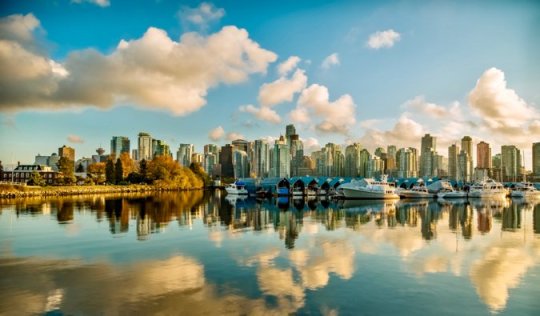
I think this must be one of the most livable cities in the world. I’d certainly live in it, which is my benchmark for whether or not I really like a place. In Vancouver, you can go from the city into the mountains in minutes. I think that is really the highlight of the city for me — the fact that I don’t have to go far to be with nature.
Not only is there incredible nature nearby but there’s a park so big in the middle of the city, I often feel like I am in the center of a forest. Add in a vibrant food and art scene, and Vancouver is definitely a world-class city. It’s not a cheap city to live in, but that’s the price for all the amazing things Vancouver has to offer!
Favorite activity: Hanging out on Granville Island or walking around Stanley Park.
Read our desintation guide to Vancouver and start planning your trip today.
8. Queenstown
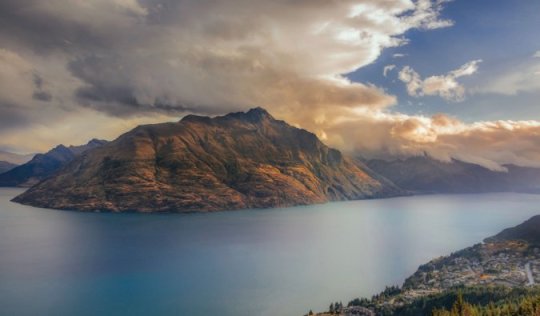
Perched on a lake in the stunning South Island mountains of New Zealand, Queenstown is a high-energy resort town for adventurers. This isn’t your typical city, as travelers come here because they want to be outside. There’s bungy jumping, hiking, rafting, zip-lining, boating, and tons more. It’s a paradise for the outdoorsy type and the perfect city for people who don’t like big, crowded cities.
The city and surrounding area are postcard-perfect (much like the rest of the country! I would jump on a plane and head back there right now if I could.
Favorite activity: Hiking the surrounding mountains.
Read our guide to Queenstown to plan your next adventure there.
9. Perth
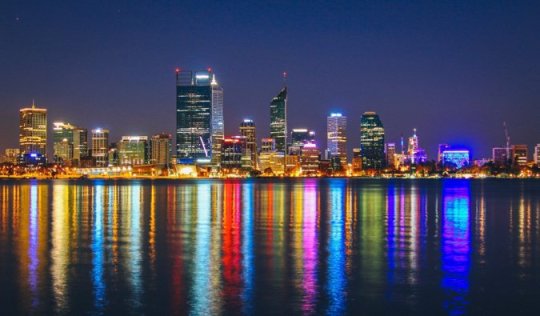
Perth, Australia, is more like a big town than a city — and I think that’s what I like about it. It’s big enough to have a lot to do but small enough to feel cozy. I love Perth because of that small-town, big-city feel and for the fact that it’s on the water and has a great nightlife.
Not only that, but Perth is a great jumping-off spot to see the western Australian parks and natural sites, and it’s also close to hip Freemantle, which is home to my favorite Australian brewery: Little Creatures. I find it much more personal than other towns in Australia.
Favorite activity: Relaxing at the beach
Read our budget travel guide to Perth for more information!
10. Hong Kong
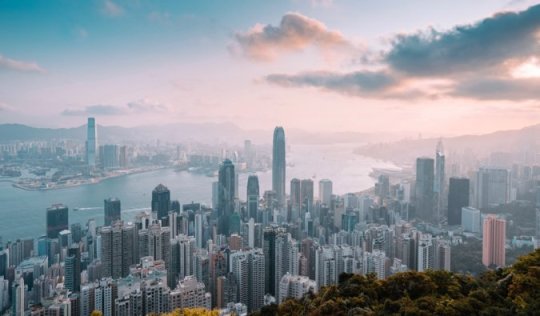
Hong Kong is one of the best cities in the world for foodies. I always stop in when I’m in Asia and stuff my face with some of the best dumplings in the world. The city is busy and dense (it’s one of the most densely populated places on the planet) but it has a fun nightlife and tons of activities to keep you entertained, from markets to temples to nearby hikes outside the city.
While the city offers an interesting mix between eastern and western cultures, what really sets Hong Kong apart from other massive, dense cities is just how clean and well-organized it is. Getting around is a breeze, making it an easy and fun place to explore for a few days — or more!
Favorite activity: Eating dumplings!
Get my comprhensive budget travel guide to Hong Kong and know all the best local spots to visit!
11. Reykjavik

Iceland is one of the most expensive countries in the world. As a budget traveler, you’d think that would keep me away but let me tell you something: it’s absolutely worth the price.
Reykjavik has tons of cozy cafes, wild clubs, cute architecture, and friendly pubs. It’s tiny, yet you can easily spend a few days here and not get bored (especially if you’re a night owl. Icelanders love to party).
Fortunately, as the tourism industry grows, there are more and more free (or cheap) things to do in the city. And with Icelandair offering free stopovers on flights between North America and Europe, it’s never been easier to visit this charming Scandinavia capital.
Favorite activity: Cozying up in a cafe to read and people watch.
Get my comprehensive budget travel guide to Iceland here!
12. London

As a history nerd, I’ve always loved visiting London. Some of the best museums in the world are there — and they are all free (there are tons of other free things to see and do as well).
But it wasn’t until last year when I spent a month in the city that I really “got” it. I understood why people loved it. There was a charming sophistication to the place.
Strolling the streets of the city, enjoying the markets, taking in the history of the place, laying in the park, and having a pint outside a pub? Heaven.
Paris will always have my heart but London comes close.
Favorite activity: Visiting as many museums as I can and then drinking at a pub.
Check out our travel guide to London to plan your trip.
***
There are you have it! My favorite cities in the world. Leave a comment on this post and let me know what your favorites are – and why!
P.S. – I just released a new book! It’s called “Ten Years a Nomad” and it’s about my ten years backpacking the world and the lessons I learned from it. It features tons of stories I’ve never told on this blog and is a book that delves into the why of travel! Click here to learn more, grab your copy today, and meet me on my book tour!
Book Your Trip: Logistical Tips and Tricks
Book Your Flight
Find a cheap flight by using Skyscanner or Momondo. They are my two favorite search engines because they search websites and airlines around the globe so you always know no stone is left unturned.
Book Your Accommodation
You can book your hostel with Hostelworld as they have the largest inventory. If you want to stay somewhere other than a hostel, use Booking.com as they consistently return the cheapest rates for guesthouses and cheap hotels. I use them all the time.
Don’t Forget Travel Insurance
Travel insurance will protect you against illness, injury, theft, and cancellations. It’s comprehensive protection in case anything goes wrong. I never go on a trip without it as I’ve had to use it many times in the past. I’ve been using World Nomads for ten years. My favorite companies that offer the best service and value are:
World Nomads (for everyone below 70)
Read the full article
0 notes
Text
How to Visit the Seychelles on a Budget
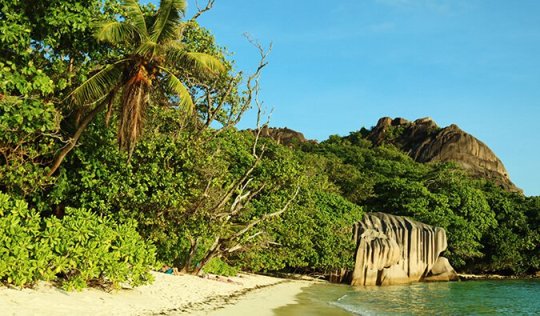

Posted: 8/1/2019 | August 1st, 2019
In this guest post, Ellie Hopgood from Endlessly Restless offers some handy tips on how you can visit the Seychelles on a budget! This is a destination I’ve always dreamed of visiting so I was excited to have her write some tips for the country! It’s always viewed as one of the most expensive in the world but, as this post shows, it’s possible to visit on a budget!
The Seychelles, an archipelago of 115 islands off the east coast of Africa, are known for being extremely beautiful — and extremely expensive. The pristine turquoise water and white-sand beaches come with a hefty price tag.
If you want to drop serious money on a holiday, the Seychelles definitely have plenty of places perfect for an eye-wateringly expensive trip, with high-end rooms at the Madame Zabre Spa Resort on Desroches Island going for almost $15,000 USD per night, as well as a plethora of rooms available in the $500-$1,000-per-night range. There are even whole islands commandeered by one resort, such as Cerf Island, which consists solely of the 24 villas that make up the aptly named Cerf Island Resort.
But even though fancy resorts like that were way out of my budget, I was determined to visit these islands — and do so frugally, with a backpacker’s budget in mind.
After spotting an obscenely cheap and convenient flight deal — and desperate to get out there and explore these beautiful islands — I booked round-trip flights from London without much research (though I don’t necessarily recommend this approach to travel planning).
I typically travel in Europe (often in Eastern Europe), so my idea of what constitutes a cheap trip might be distorted. Paying over $15 for my share of a night’s accommodation pains me. So my eyes widened when I saw the average cost in the Seychelles. But the flights were booked, so I had no choice but to figure out how to see the islands on a budget. I set to work, reading blogs and forums furiously, but there was very limited information available.
After securing some affordable accommodation, I braced myself for a painfully expensive trip — but in the end, to my surprise, it was so much easier to be budget-conscious than I imagined.
Were the Seychelles the cheapest destination? No.
But, I learned, they don’t have to be prohibitively expensive either.
So, how do you save money in the Seychelles?
Here’s how you can take an affordable trip to paradise:
1. Find cheap flights (they do exist!)
We found round-trip flights from London with British Airways for just over $600, a deal so good that it sparked the whole trip. I always use Skyscanner, as that’s where I reliably find the best flight deals. As always, you’ll typically find cheaper flights if you travel in shoulder season; are flexible with exact dates, times, and layovers; and avoid school vacation periods. Some tips on how to save on your flight:
Look at deal websites – Deal websites like Holiday Pirates, Scott’s Cheap Flights, and The Flight Deal often have great last minute fares and package deals to the islands.
Search the main cheap flight websites – Skyscanner and Momondo let you compare prices and see if there are any budget carriers flying the route.
Be flexible with your dates – Airline ticket prices vary depending on the day of the week, time of year, and upcoming holidays. Moreover, it’s always cheaper to fly during the middle of the week than on a weekend, because most people travel on the weekends and airlines hike their prices then. If you zig when others zag, you are going to find better deals.
Travel hack – This is the best way to get cheap flights..because it gives you free flights. Airline rewards programs are a great way to get free flights, free upgrades, and free companion tickets. Points = free flights. Through credit card sign up bonuses, everyday spending, contests, online promotions, bonus points, and so much more, you can easily gain hundreds of thousands of points per year without ever spending extra money! To learn how to do this, check out this post!
For more tips on how to find a cheap flight, check out this post!
2. Stick to cheap guesthouses (that serve breakfast)

The Seychelles don’t yet have a lot of budget accommodations, but I was able to find affordable rooms using Airbnb, though similar rooms are also available through Booking.com. There are also a number of small guesthouses and hotels that offer rooms for $60–100 USD per night. While some of these places have their own websites, like our La Digue guesthouse Liane de Mai, others can only be booked through platforms like Airbnb and Booking.com, like our self-catered accommodation on Mahé via CAMEC apartments.
The best thing to do is to go onto your favorite budget accommodation site and put in the island you plan to stay on. That should show you a selection of accommodations so you can choose something in your price range.
To keep costs even lower, try to stay somewhere that offers self-catering facilities or that serves breakfast. Self-catering allows you to save by preparing your own meals, while an included breakfast takes care of a third of your meals and lets you fill up on delicious fruit, toast, yogurt, and eggs that will keep you going for hours. You can also take a few snacks from breakfast, like rolls or bananas, for later in the day when you need a boost of energy. All the places we stayed made clear in their Airbnb profile whether a kitchen was available or if breakfast was included, though you could also email and ask.
There is also a small Couchsurfing community in the Seychelles, with most of the hosts based on Mahé. Nothing is cheaper than free — so if you are fond of couch surfing and happy to stay on the main island, this might be a good option.
Check out our comprehensive resource section for more tips on finding cheap accommodation!
3. Eat take-out
Eating out in restaurants in the Seychelles is painfully pricey for fairly average food. A simple bowl of tomato pasta can easily run you $20 USD, while a three-course meal with alcohol will set you back $70–80 USD per person.
However, the Seychelles is also full of places to get take-out, small establishments, and mobile food vans all over the islands, directly alongside main roads or signposted clearly, serving up local dishes for incredibly low prices. These are where many of the locals eat dinner, along with visitors who are looking for delicious and cheap eats.
For only $3–5 USD, you can buy two main courses with a generous serving of rice and salad. These meals tend to be fresh, Seychellois dishes that change every day, typically curries made with fish, chicken, beef, or vegetables, served with rice and salad. There are also often Chinese-takeout-type dishes like fried noodles and rice.
My favorite find was Mi Mum’s on La Digue, which served the most delicious chicken “zye zye” curry with rice and salad for the unbeatable price of $4 USD.
4. Take the bus
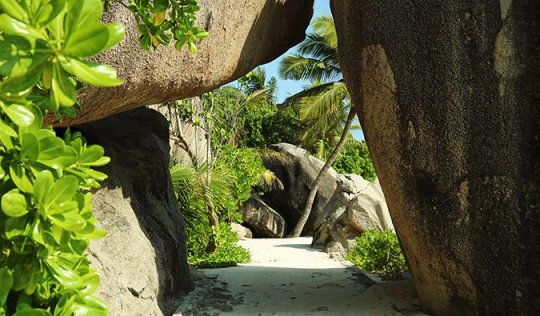
Taxis are insanely expensive — think $20 USD for a trip of only a couple of kilometers — and are not a viable option for anyone trying to travel on a budget. You can rent a car for around $40 USD per day, which may be manageable if you are traveling in a group or splitting the cost with someone, but still expensive compared to the cheapest option: the bus. (As a bonus, the bus is as much an activity as it is a convenient transport option, as the bus bounces up and down hills on a road bordering the ocean!)
On both Praslin and Mahé, you buy a flat-rate ticket as you get on and travel as far as you need to, whether that is one stop or ten. On Praslin, a bus ticket costs 7 SCR (50 US cents) while tickets are 6 SCR (45 US cents) on Mahé. The buses come infrequently, so it is worth consulting the timetable. I was given a Praslin timetable at my accommodation (though you can also find it online), and you can download Mahé’s extensive schedule here.
La Digue has very few cars and no buses, so walking and biking are the best options, which is also true for all of the smaller islands.
5. Stick to beach-hopping
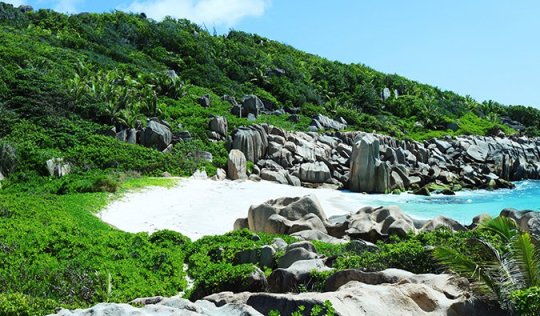
While a small minority of beaches are only accessible if you are a guest of a specific resort, for the most part, the most glorious part of visiting the Seychelles (going to the beach) is completely free.
You can enjoy the pristine white sand and blue water; watch the birds, bats, and tortoises move around the island; and explore the amazing undersea wildlife straight from the beach — and it won’t cost you a dime.
My favorite free beaches are Anse Coco on La Digue, Anse Lazio on Praslin, and Beau Vallon on Mahé.
One big exception to the free beaches rule is that Anse Source d’Argent on La Digue, which is one of the world’s most beautiful beaches, charges you for entry. The cost is 100 SCR ($7 USD) for a single entry, so go when you have time to spend the whole afternoon (or day!) enjoying the beach and its unusual rock formations. If you want to avoid the charge, then you can swim or walk through the ocean from just outside the entrance to the park and enter the beach that way. However, you’ll have to swim back out, as park rangers often check your ticket as you leave!
6. Bring enough sunscreen!
An easy way to save a few bucks is to bring more sunscreen than you think you’ll need. Sunscreen is very expensive ($15 USD for a small bottle) but also very necessary, given the blazing equatorial sun that can burn skin in minutes. I was woefully underprepared for the amount of sunscreen I would need, so much so that within two days I had to shell out a small fortune for a big enough bottle to get me through the rest of the trip. If you can avoid buying this necessary item on the islands, then do.
7. Move slowly
To get between the islands, you can fly or take a ferry. Neither way is particularly cheap. A return flight from Mahé to Praslin (which only takes about 15 minutes!) will likely cost $150–200 USD. Ferries are marginally cheaper: about $60 USD each way between Mahé and Praslin and around $20 USD each way between Praslin and La Digue.
There is only one ferry provider serving each of the main routes between the three major islands, making you a captive audience for their high prices. So unless you’re Michael Phelps, you’re stuck paying whatever Cat Cocos (between Mahé and Praslin) and Cat Rose (between Praslin and La Digue) charge for the tickets. The less you travel between the islands, the cheaper your total transport bill will stay.
8. Minimize cash withdrawals (and use the right ATMs)

As in many other places, there are heavy charges levied on withdrawals at cash machines, to the tune of 100 SCR ($7 USD) per withdrawal. These withdrawal fees are fixed by the ATM and are different than foreign exchange fees. Charles Schwab and Fidelity offer cards that refund these ATM fees, though Fidelity does charge a 1% foreign exchange fee.
However, a simpler solution than opening a new checking account is to be vigilant about which ATM you use. Barclays ATMs levy the withdrawal charge, while MCB ATMs tend to have no fee. A full list of MCB ATMs can be found by clicking here.
ATMs will only give you rupees, though most prices are quoted in euros. You can bring euros with you or change them at the airport and banks for no charge. The Seychelles are largely cash-only, so figuring out how to get cash without incurring charges is important.
For more tips on avoiding ATM fees, check out our comprehensive article on how to avoid fees when traveling!
9. Drink the tap water (or at least bring a bottle with a filter)
While most online information says that the water in the Seychelles is not safe to drink, I quickly started drinking the tap water and was completely fine. Given the extreme heat and humidity, you will need to drink a lot of water, which adds up fast if you have to keep buying plastic bottles (not to mention the environmental impact of that much disposable plastic).
If you don’t feel comfortable drinking the tap water, then I’d recommend bringing a bottle with a built-in filter or buying a SteriPEN or Lifestraw. Not constantly buying bottled water will help keep both your costs low and the environment clean.
10. Bring your own mask and snorkel

Unlike many beach paradises, you don’t need to go out on a boat to get to prime snorkeling territory. You can swim straight off the beach onto a reef and see rays, sharks, eels, fish, and more. I swam out from Anse Source d’Argent and was greeted by a friendly ray who let me follow him for half an hour in perfect peace. It was magical. However, renting a snorkel and mask often can get expensive. Snorkel rentals go for $10 USD a day or more. Bring your own to save money!
***
By following the above advice, it should be possible to take a trip to the Seychelles that doesn’t cost an arm and a leg (maybe just a hand). If you stay in small guesthouses that serve breakfast, eat takeout for most of your meals, spend most of your time exploring the beaches, and hunt for a good flight deal, you’ll spend between $120–140 USD per day (less if you are traveling with someone and can split accommodation costs), though it’s also good to leave some wiggle room for putting money in the hands of any Seychellois guides or vendors who really make a difference to your trip.
If you are willing to shell out more, then the sky’s the limit, but if splurging, I would recommend a guided tour through the jungle (it’s typically not safe to venture out alone) or diving, as the Seychelles are home to some world-famous dive sites. A whole day’s guided hike, including lunch and entrance to world-famous beach Anse Source d’Argent, costs about $70 USD, and each dive with Octopus Dive Centre was around $60 USD (less if you have your own equipment). I did both of these activities and they were completely worth it.
I firmly believe that the Seychelles is one of the world’s most beautiful places and should be on the bucket list of any avid traveler. And, hopefully, these budget tips will allow you to visit the Seychelles without breaking the bank!
Ellie Hopgood is an investment writer in London, covering topics in economics, politics and global finance. She writes about travel, politics and photography on her blog Endlessly Restless. She spends a borderline unhealthy amount of time editing photos and checking the cost of flights to places she has no immediate intention to visit. You can find her on Twitter (@elliemhopgood).
P.S. – Did you know I wrote a new book? It’s called “Ten Years a Nomad” and it’s all about the lessons I’ve learned from a life of travel. It features tons of stories and misadventures I’ve never told on this blog as well! Click here to learn more and grab your copy today! (I’m doing a book tour too! I’ll be in Austin, Houston, Denver, and San Diego next week!)
Book Your Trip to the Seychelles: Logistical Tips and Tricks
Book Your Flight
Find a cheap flight by using Skyscanner or Momondo. They are my two favorite search engines because they search websites and airlines around the globe so you always know no stone is left unturned.
Book Your Accommodation
You can book your hostel with Hostelworld. If you want to stay somewhere other than a hostel, use Booking.com as they consistently return the cheapest rates for guesthouses and cheap hotels. I use them all the time.
Don’t Forget Travel Insurance
Travel insurance will protect you against illness, injury, theft, and cancellations. It’s comprehensive protection in case anything goes wrong. I never go on a trip without it as I’ve had to use it many times in the past. I’ve been using World Nomads for ten years. My favorite companies that offer the best service and value are:
World Nomads (for everyone below 70)
Insure My Trip (for those over 70)
Looking for the best companies to save money with?
Check out my resource page for the best companies to use when you travel! I list all the ones I use to save money when I travel – and I think will help you too!
Looking for more information on visiting the Seychelles?
Check out my in-depth destination guide to the Seychelles with more tips on what to see, do, costs, ways to save, and much, much more!
The post How to Visit the Seychelles on a Budget appeared first on Nomadic Matt's Travel Site.





Source link
Read the full article
0 notes
Text
Are You Happy With Your Life?


Posted: 7/29/2019 | July 29th, 2019
I was recently gifted the sci-fi thriller Dark Matter. Without giving too much away, the book revolves around the idea of a multiverse, where every possible outcome of a decision plays out — and each decision thereafter creates another split and so forth and so forth. It’s an infinite multiverse of all the possible outcomes of every decision you could ever make.
But, to me, it’s really a book about regret.
It’s about wondering what would have happened if you had followed the road not taken.
Where would you be if you had stayed with that girl, taken that job, or moved to that new city? Would you be happier as a result?
We map out how we hope our life will unfold.
First this, then that, then this, then that.
But life never unfolds the way we imagine it will. Life isn’t like writing a novel where you can plot out how things will end and ensure the characters behave as you want. Every decision you — and those around — make throughout the day shifts the direction of your life.
Life is what happens when you are busy making plans.
One day, we wake up and find we’re far off from the path we had hoped to traverse. We took a different job; broke up with that girl; suffered a health issue, family death, or financial disaster; moved somewhere new; decided to go back to school; or met someone who inspired us to travel the world.
A million and one things can pull us off the path we envisioned.
When you look back on the whole of your life, it’s easy to see where you deviated from the path you laid out for yourself. You can see the pivotal choices and moments that changed your life for good or ill.
What would have happened if my friend Scott had never convinced me to go to Thailand all those years ago?
Or if I had missed that bus in Chiang Mai where I met those backpackers who ended up inspiring my trip around the world?
What if I had never started this blog?
What would have happened if I had stayed in Taiwan with my girlfriend all those years ago?
Humans are really good at wondering about what might have been. We tend to look at our life in retrospect and judge our past actions by where we are now.
But when we’re in our life, you don’t see the grand vision. We’re just trying to get through the day as best we can. We’re thinking about the tasks at hand — the meeting in an hour, the laundry that needs to be picked up later, what we’re going to make for dinner — not the big picture.
Our brains aren’t hardwired for that kind of thinking.
For all our big talk about how humanity is different because we can think about the future, we’re often just like other animals: only seeing the moment right in front of us.
***
When I moved to Paris, I had big goals. I was going to meet people, attend influencer and tourism events, sightsee every day, and live that #bestlife.
Yet through long lunches and bottles of wine with friends and long days writing my new book, and by catching up on sleep and hosting a lot of friends, I strayed far from those original plans. Looking back, I did little of what I originally planned to do.
In a sense, I failed.
And I could easily look back with regret and wonder what would have happened if I had done what I had planned to do. What would I have learned about the city? Who would I have met?
But then I think back to Dark Matters and the question that sets the whole book in motion:
“Are you happy with your life?”
It’s such a simple but powerful question.
Beyond all the daily complaints and frustrations and minor annoyances, how often do we really ask such a deep and fundamental question?
“Are you happy with your life?”
Day to day, it’s easy to lose sight of the big picture. To never see the forest through the trees. To look back and think of the goals we made that we never reached.
But what we do every day is a reflection of our values and our goals.
If you’ve lived your values every day, haven’t you really reached those goals?
When you zoom out and ask yourself if you’re happy with your life, what do you say?
We get twenty-four hours to make the right choice.
And if we fail, we get to wake up and try again.
I wouldn’t trade those long meals and writing sessions or those quiet nights in for anything. They helped create a sense of balance in my life the first time in a long time.
When I look back at the what-ifs and see the choices I made, I can’t really regret them — because they brought me to where I am today.
And, when you’re happy with your life, how can you really regret the path that brought you there – even if it’s not the exact one you planned?
P.S. – I just released a new book! It’s called “Ten Years a Nomad” and it’s about my ten years backpacking the world and the lessons I learned from it. It features tons of stories I’ve never told on this blog and is a book that delves into the why of travel! Click here to learn more, grab your copy today, and meet me on my book tour!
Book Your Trip: Logistical Tips and Tricks
Book Your Flight
Find a cheap flight by using Skyscanner or Momondo. They are my two favorite search engines because they search websites and airlines around the globe so you always know no stone is left unturned.
Book Your Accommodation
You can book your hostel with Hostelworld. If you want to stay somewhere other than a hostel, use Booking.com as they consistently return the cheapest rates for guesthouses and cheap hotels. I use them all the time.
Don’t Forget Travel Insurance
Travel insurance will protect you against illness, injury, theft, and cancellations. It’s comprehensive protection in case anything goes wrong. I never go on a trip without it as I’ve had to use it many times in the past. I’ve been using World Nomads for ten years. My favorite companies that offer the best service and value are:
World Nomads (for everyone below 70)
Insure My Trip (for those over 70)
Looking for the best companies to save money with?
Check out my resource page for the best companies to use when you travel! I list all the ones I use to save money when I travel – and I think will help you too!
The post Are You Happy With Your Life? appeared first on Nomadic Matt's Travel Site.





Source link
Read the full article
0 notes
Text
The Best Walking Tours in Paris


Posted: 7/8/2019 | July 8th, 2019
I love visiting Paris. I’ve been going there for over nine years and have yet to tire of the history, the charm, or the food (and wine!).
Over the years, I’ve taken a million different tours of this amazing city to learn more about what makes it tick. For four months earlier this year, I lived in Paris, and had the opportunity to check out even more walking tours.
And there were a lot to check out!
There are dozens upon dozens of companies covering all aspects of life in Paris, and it can be hard to make a sense of all those endless Viator and Tripadvisor listings. It’s obscene how many tour companies there are. (I mean I’ve tried so many tour companies and I STILL have more on my list to try (and some to retry).)
But, I still feel like I’ve done enough to warrant a post on some of the best walking tour companies in Paris, so, today, I want to share with you my top favorites:
1. New Europe Tours

New Europe is one of the most popular free walking tour companies in all of Europe. Their main free tour takes you around the center of Paris and gives you a historical overview of the city. They also run a good (but paid) tour of Montmartre, and they have a really fun pub crawl as well if you’re looking to hit the bars with other travelers.
The basic tour will last around three hours and is free, though you’ll want to tip your guides. Some tours cost 15-35 EUR per person.
—> Click here to book your tour with New Europe!
2. City Free Tour

This free-tour company, like New Europe, offers a couple great general tours to help you get familiar with the City of Light, led by a local expert who can answer your questions. They also offer a few specialized tours so you can really focus on different neighborhoods. For example, the Montmartre tour does a great job of showing you just what life is like in this famous bohemian neighborhood, while the Latin Quarter tour highlights some of the most famous landmarks in town.
Tours are free and last around three hours. Just be sure to tip! Private tours are available upon request for an additional fee.
—> Click here to book your tour with City Free Tour!
3. Discover Walks

Discover Walks offers free walking tours, as well as paid options if you’re looking for something more focused and in-depth. With almost 30 tours on offer in Paris, chances are you’ll be able to find something to pique your interest. They have a great free tour of the Latin Quarter, and there’s even a vegetarian and gluten-free food tour! For something more unique, try the photography tour.
Free tours last around 90 minutes. A recommended tip of 13 EUR is suggested. For the paid tour options, prices start at 25 EUR per person.
—> Click here to book your tour with Discover Walks!
4. Localers

Localers are a great choice if you’re looking for a unique tour option and want something more nuanced than just a free walking tour. They tend to specialize in more niche tours like literary, art or historical tours. I enjoyed their tours a lot. I hadn’t heard of them before I moved here and was bummed their tours had flown under my radar for so long.
The World War II tour is particularly insightful and does a great job of illuminating the war’s true cost to Paris. I also really liked the Scandalous Paris tour, which highlights Paris’ brothels and more colorful past. There’s also an insightful literary tour too that takes you through the literary history of the city’s left bank. This is a solid mid-range tour company for travelers looking for value.
Tours last 2-5 hours. Tickets start at 58 EUR per person.
—> Click here to book your tour with Localers!
5. Context Travel

Context Travel hires experts in their fields so that every tour is an incredible educational experience and you’ll go much deeper than any free walking tour does. I am always shocked by how much I learn! I particularly love the Paris Market Tour and the Versailles Tour (which is four hours long, but you learn a ton). Context isn’t cheap, and the tours are usually long — but they’re worth every penny if you’re serious about really learning a lot.
Tours start at 100 EUR per person. They include a maximum of six people at a time.
—> Click here to book your tour with Context!
6. Walks

What makes Walks amazing is that they get better access than most tour companies and hire specialized guides. You get to skip the line, go before or after other tours so you have the space to yourself, and get fun guides who are knowledgeable in their field. They also have a nine-hour full-day tour of the city for anyone looking to really explore (it’s a great option if you’re short on time but still want to see everything).
Their tours are reasonably priced, and their guides always know their stuff. I’ve gone on three of their tours and loved them all.
Most tours last 2-3 hours, though some take the entire day. Tickets start at 55 EUR per person.
—> Click here to book your tour with Walks!
7. Fat Tire Tours

Offering cycling tours of Paris, Fat Tire Tours are probably the best bike tour in town. I don’t think I’d go with anyone else. Their bike tours are the best. Do their Versailles tour – and try to do it on Sunday or Tuesday when they stop at the market that is open then) and, if you can, check out their Monet’s Garden tour where you can cycle around the gardens of the famous impressionist while exploring the charming village of Giverny.
Most tours last 2-3 hours, though there are several full-day options available too. Tickets start at 34 EUR per person.
—> Click here to book your tour with Fat Tire Tours!
8. Paris by Mouth

Paris by Mouth company offers a handful of neighborhood tours that highlight the best food in Paris. The groups are kept small (no more than eight people) and they are really focused on providing a lot of information on food, history, and culture. It’s like a mini-class more than it is a chance to just eat food (though you do that too).
The tours aren’t super budget friendly but if you’re looking for a really detailed food tour, this company would be it. And if you’re a diehard fan of French cheese like I am, they also have an entire workshop just for cheese. It’s amazing.
Tours usually last around three hours. Tickets start at 110 EUR per person.
—> Click here to book your tour with Paris By Mouth!
9. Secret Food Tours

While not the cheapest, Secret Food Tours offers neighborhood-specific food tours. They also have a dangerously delicious pastry and chocolate tour that will take you around to half a dozen bakeries and shops to give you a firsthand experience of Paris’s love of decadent desserts. You’ll get A LOT of food during the tour, so come hungry. Be sure to avoid Monday tours, when most markets are closed and you end up just eating in one location instead of going from shop to shop.
Tours last 2-3 hours. Tickets start at 89 EUR per person. They can sell out weeks in advance, so be sure to reserve early!
—> Click here to book your tour with Secret Food Tour!
10. Eating Europe

Eating Europe’s Paris food tour, Hip Eats and Backstreets, is one of the most sought-after food tours in town. You’ll have the opportunity to try some of the best foods in Paris while also getting to chat with the chefs and entrepreneurs who have brought the dishes to life. It’s not just a tour where you get to eat amazing food but rather an experience during which you’ll learn about the culinary traditions and innovations firsthand from local artisans. It’s the perfect tour for any die-hard foodies.
Tours last four hours and they depart at 12:30pm Tuesday through Saturday. Tickets are 95 EUR per person.
—> Click here to book your tour with Eating Europe!
11. Street Art Tour Paris

For an insider, niche tour about Paris’s art scene, check out Street Art Tour Paris. Their guides are all artists and will take you around various neighborhoods to show you the best and most interesting works of street art (and murals) that Paris has to offer. They also have a tour that focuses exclusively on female artists.
Tours operate 2-3 times per week based on interest (usually on the weekends) and last around 2.5 hrs. Tickets start at 20 EUR per person.
—> Click here to book your tour with Street Art Tour Paris!
12. Paris Bar Crawl

If you’re looking for a more rambunctious way to spend an evening, head out on a pub crawl. Paris Bar Crawl is one of the most popular ones (it tends to be just for tourists and visiting students though). You’ll meet a bunch of new people while seeing what nightlife in Paris is all about. The tour visits three bars and one club.
Tours start at 8:30pm Thursday-Saturday and last until you decide to go home! Tickets are 15 EUR per person and include three shots as well as admission to a club.
—> Click here to book your tour with Paris Bar Crawl!
***
Walking tours are a great way to get below the surface of Paris. Every time I visit, I always make sure to try a new one. Having an expert guide to answer your questions while providing in-depth, local knowledge is the best way to deepen your experience as a traveler.
These walking tour companies are the best in Paris and will be able to provide you with the insight and information you need to really make the most out of your next visit to this incredible city.
Book Your Trip to Paris: Logistical Tips and Tricks
Book Your Flight
Find a cheap flight by using Skyscanner or Momondo. They are my two favorite search engines because they search websites and airlines around the globe so you always know no stone is left unturned.
Book Your Accommodation
You can book your hostel with Hostelworld. If you want to stay somewhere other than a hostel, use Booking.com as they consistently return the cheapest rates for guesthouses and cheap hotels. I use them all the time. Some of my favorite places to stay in Paris are:
St. Christopher’s Canal – Comfy spot on the canal. During the summer months, the terrace is hopping!
3 Ducks Hostel – This hostel has one of the cheapest bars in the city, and it’s just a 10-minute walk to the Eiffel Tower.
Les Piaules – Fantastic chimney lounge, a cool bar, and a rooftop space. It’s a great place to meet people!
Don’t Forget Travel Insurance
Travel insurance will protect you against illness, injury, theft, and cancellations. It’s comprehensive protection in case anything goes wrong. I never go on a trip without it as I’ve had to use it many times in the past. I’ve been using World Nomads for ten years. My favorite companies that offer the best service and value are:
World Nomads (for everyone below 70)
Insure My Trip (for those over 70)
Looking for the best companies to save money with?
Check out my resource page for the best companies to use when you travel! I list all the ones I use to save money when I travel – and I think will help you too!
Looking for more information on visiting Paris?
Check out my in-depth destination guide to Paris with more tips on what to see, do, costs, ways to save, and much, much more!
Photo Credit: 8 – David McKelvey, 11 – Bex Waltn, 12 – Jeanne Menjoulet, 13 – Thomas Sauzedde
The post The Best Walking Tours in Paris appeared first on Nomadic Matt's Travel Site.





Source link
Read the full article
0 notes
Text
Is Central America Safe to Visit?
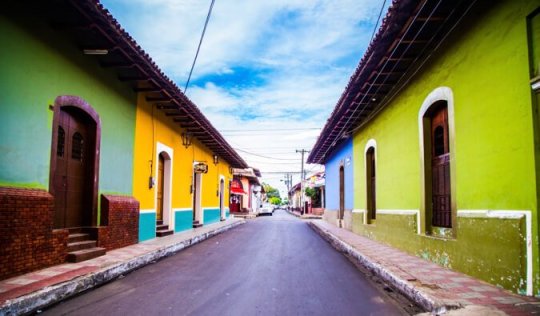
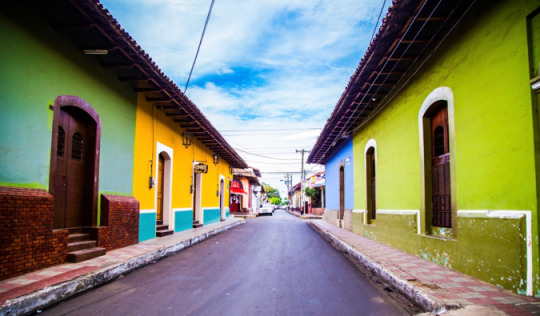
Posted: 7/6/2019 | July 6th, 2019
Central America is one of my favorite regions for backpacking. While it can be challenging to get around, it also offers incredible beauty, abundant nature, picturesque beaches, and affordable prices.
Political upheaval and civil unrest kept tourists at bay for a long time, however. But these days the area has developed into something of a hotspot for travelers, surfers, and retirees.
Why?
Because Central America has something for everyone!
But is it safe?
Yes — but that doesn’t mean you don’t need to take precautions.
In this post, I’ll go over everything you need to know to stay safe and have an amazing trip in this incredibly diverse region!
Table of Contents
What Countries are in Central America?
8 Important Safety Tips for Central America
What is the Northern Triangle? Is it Safe?
What is the Safest Country in Central America?
Is Central America Safe for Solo Travelers?
Is Central America Safe for Solo Female Travelers?
Are Taxis Safe in Central America?
Can You Eat the Street Food in Central America?
Can You Drink the Water in Central America?
What Countries are in Central America?
There are seven countries in Central America:
Belize
Costa Rica
El Salvador
Guatemala
Honduras
Nicaragua
Panama
Click on the map for country guides:

Central America
8 Important Safety Tips for Central America
While Central America is considered generally safe for traveling and backpacking, there’s no denying that some precautions should be taken.
Be aware of your surroundings – It can be easy to stop paying attention and let your guard down. But that’s when disaster strikes. Always be aware of your surroundings.
Avoid isolated areas – If you’re somewhere isolated, you’ll be at a greater risk for getting robbed, especially at night and in big cities. Try to stay where the crowds are. That’s the best way to avoid being singled out by potential muggers.
Don’t wear flashy items – Petty theft is the most common threat here, so remove any jewelry or watches, and don’t wave your phone around. Do your best to blend in, so you don’t become a target for pickpockets.
Separate your cash – Keep only the money that you need for the day on you. Keep the rest locked away safely at your accommodation.
Take taxis at night – If you need to get somewhere at night, take a taxi. It will be safer than any public transportation. Have your accommodation call the taxi for you, so you can be sure you’re getting a reputable driver.
Be careful on public transit – If you have to take public transit, keep your valuables on you and keep them well secured, especially on chicken buses (colorful, modified, and decorated buses that transport goods and people). Petty theft is common on night buses, so avoid them if you can.
Don’t do drugs – The cartels here have really made life difficult for the local population. Don’t support them by buying their products. Drug penalties are also harsh in the region, and you don’t want to end up in jail here!
Buy travel insurance – Travel insurance will keep you protected if you get injured or ill, are a victim of theft, or have to deal with delayed or canceled flights. It’s a worthwhile investment and can save you thousands of dollars. Don’t risk traveling without it!
At the end of the day, you’ll just need to always trust your gut instinct. If a taxi driver seems shady, stop the cab and get out. If your hotel is seedier than you thought and seems unsafe, get out of there and find a new place to stay. You have every right to remove yourself from such situations, so do what you need to do to feel safe.
What is the Northern Triangle? Is it Safe?
The Northern Triangle comprises Guatemala, El Salvador, and Honduras. It’s the region of Central America that traditionally (and currently) has the most crime and violence. This is usually concentrated in the larger cities, and particularly in specific neighborhoods. If you’re going to be in the capital cities of any of these three countries, you’ll want to talk to your hostel or hotel staff for the most up-to-date safety advice.
That being said, if you’re visiting tourist areas or going on nature excursions, then you won’t have any issues here as long as you follow the safety advice above.
What is the Safest Country in Central America?
Costa Rica, which provides safety and stability alongside incredible natural beauty. Of course, prices are also much higher and reflect the country’s status as “the Switzerland of Central America.”
If you’re new to backpacking and want to start off somewhere that offers a good mix of adventure and safety, go for Costa Rica. It was the first country I ever backpacked in, and I absolutely loved it!
In terms of safety, the next best place is Panama. It’s home to a growing community of expats and retirees, which is giving the country an economic boost and making it a bit more gringo friendly. That means you’ll be able to get lots of great tips and suggestions (including specific, local safety tips) from the expat community while still having yourself an adventure.
Coming in strong behind Panama is Belize. It does a great job of balancing safety with plenty of things to see and do!
Is Central America Safe for Solo Travelers?
Central America is quite safe for solo travelers. As long as you avoid isolated areas and don’t travel alone at night, you’ll be able to avoid the most common issues tourists face, such as petty crime.
If you’re worried that you won’t feel safe, try to join a group of other travelers or invite people from your hostel to join you when you go out. That way, you’ll be able to feel safe while also getting to connect with other people.
As a solo traveler, be sure to scan your passport and other important documents and email them to yourself in case you do happen to run into trouble.
Additionally, be sure to download offline maps and offline language apps so you can look up directions if you get lost or communicate with the locals in an emergency. If you can, try to learn some Spanish before you go too. Even a few key phrases can go a long way!
Is Central America Safe for Solo Female Travelers in Particular?
Solo female travelers will need to be more on guard during their time in Central America. Costa Rica, Panama, and Belize are the safest countries in the region. If you’re new solo female travel, stick to these countries.
Outside of those three countries, I’d suggest new solo female travelers stick to group travel or tours, just to be safe. However, experienced solo female travelers should be able to navigate the region without too much additional concern.
Women should be extra careful in large cities, though, especially at night. Beyond that, as long as you follow the usual precautions, you’ll be able to have an amazing time!
Are Taxis Safe in Central America?
The taxis in Central America are safe and reliable, though you’ll always want to make sure you’re getting in marked taxi. Never get in an unmarked car.
During the day, you can hail a taxi from the street safely, but you’ll want to be aware of the local custom, as some countries’ taxis use meters and others require you to negotiate a price in advance.
If taking a taxi at night, have your accommodation call it for you. Never hail a random taxi at night.
Can You Eat the Street Food in Central America?
You bet you can! You’ll find all sorts of amazing street food stands and local restaurants in Central America, and you’d be missing out if you didn’t try them! Just make sure to stick to places where there are a lot of locals gathered. That’s how you know the food is not only safe but delicious too!
For the most part, you’ll encounter places that sell various kinds of chicken. As long as it is fully cooked (not pink on the inside) and hasn’t been in the sun all day, dive in and give it a try! A lot of food here will also be deep-fried, which will almost always be safe (just not healthy).
Don’t hesitate to ask your hotel or hostel staff for street food or restaurant suggestions. They’ll no doubt have some delicious — and perfectly safe — ones for you.
Can You Drink the Water in Central America?
As a general ruled you’ll want to avoid the tap water in Central America, although it’s likely fine in Costa Rica and Panama.
The best way to make sure your drinking water is safe is to bring a Steripen or Lifestraw for your reusable water bottle. This way you’ll be able to purify the tap water so you don’t get sick — and avoiding single-use plastic bottles in the process.
***
With so many affordable accommodation and transportation options, stunning landscapes, plentiful outdoor adventures, and beautiful beaches, it should come as no surprise that Central America is one of the most backpacked regions of the world.
Sure, it might get a bad rap due to its violent history and economic struggles, but that doesn’t mean it’s categorically unsafe. By following the tips above, you’ll be able to stay safe and healthy during your next visit!
P.S. – Did you know I wrote a new book? It’s called “Ten Years a Nomad” and it’s all about the lessons I’ve learned from a life of travel. It features tons of stories and misadventures I’ve never told on this blog as well! It comes out July 16th! Click here to learn more and grab your copy today! (I’ll be going on a book tour too!)
Book Your Trip to Central America: Logistical Tips and Tricks
Book Your Flight
Find a cheap flight by using Skyscanner or Momondo. They are my two favorite search engines because they search websites and airlines around the globe so you always know no stone is left unturned.
Book Your Accommodation
To find the best budget accommodation, use Booking.com as they consistently return the cheapest rates for guesthouses and cheap hotels. You can book your hostel with Hostelworld as they have the most comprehensive inventory. Some of my favorite places to stay in Costa Rica:
Dirty McNasty (Caye Caulker, Belize) – This is one of the biggest hostels in the country and a hub for party-goers. If you’re looking to let loose, this is the hostel for you!
Rocking J’s (Puerto Viejo, Costa Rica) – This an institution in Central America. The hostel has been there for ages and there’s a beautiful white sand beach in front of it. They have nightly BBQs.
The Naken Tiger (San Juan del Sur, Nicaragua) – Located in San Juan del Sur, the Naked Tiger is an incredible property nestled a bit far out of town but on top of a hill with a beautiful view of the entire area.
Don’t Forget Travel Insurance
Travel insurance will protect you against illness, injury, theft, and cancellations. It’s comprehensive protection in case anything goes wrong. I never go on a trip without it as I’ve had to use it many times in the past. I’ve been using World Nomads for ten years. My favorite companies that offer the best service and value are:
World Nomads (for everyone below 70)
Insure My Trip (for those over 70)
Looking for the best companies to save money with?
Check out my resource page for the best companies to use when you travel! I list all the ones I use to save money when I travel – and I think will help you too!
Want More Information on Central America?
Be sure to visit our robust destination guide on Central America for even more planning tips!
The post Is Central America Safe to Visit? appeared first on Nomadic Matt's Travel Site.





Source link
Read the full article
0 notes
Text
Is Brazil Safe to Visit?


Posted: 7/13/2019 | July 13th, 2019
Offering pristine nature and access to the Amazon rainforest, historic cities and colonial architecture, and lots of affordable food and activities, Brazil will have some something for every traveler.
A popular destination for revelers looking to party hard at Carnival as well as a hot spot for adventure junkies and beachgoers, Brazil is a country known for its amazing weather and pristine landscapes.
But is it safe?
Brazil has a reputation for being a rough and tumble destination, one where travelers need to be extra cautious and on their guard at all times.
Due to rising inequality, unfortunately, this is the case. Petty theft and street crime are a common occurrence in Brazil. The crime rate in Brazil has been on the rise for many years now (it was up almost 50% between 2015 and 2016) so travelers here will need to be on vigilant
But that doesn’t mean you should avoid the country. You just need to be a smart traveler. Millions of people visit the country every year and don’t have a problem. As long as you follow the suggested safety tips, you’ll minimize the likelihood anything bad will happen to you!
Here is everything you need to know to stay safe and make the most out of your next trip to Brazil.
Table of Contents
13 Safety Tips for Brazil
Is Street Food in Brazil Safe?
Is the Tap Water in Brazil Safe?
Are Taxis in Brazil Safe?
Is Brazil Safe for Solo Travelers?
Is Brazil Safe for Solo Female Travelers?
13 Safety Tips for Brazil
To help you stay safe in Brazil, here are 13 tips that will keep both you and your possessions out of harm’s way:
1. Walk with purpose – When out exploring, always walk with purpose. Look like you’re heading somewhere in specific, even if you’re not. Pickpockets and muggers look for travelers who are unsure of themselves. Don’t look like a target.
2. Don’t carry cash – Carry only the minimum cash needed for the day. Keep the rest locked up back in your accommodation.
3. Separate your cards – If you have more than one credit or debit card, keep them separate. Bring one with you for the day (if you think you’ll need it) and leave the other one locked up in your room. That way, should something happen, you always have at least one card.
4. Don’t bring valuables to the beach – When you go to the beach, don’t take anything unnecessary. Towel, bathing suit, and a small amount of cash. That’s it! Anything else you bring is likely to disappear!
5. Dress to fit in – When out and about, dress down and try to fit in. Leave any valuables or jewelry at home. Don’t walk around flashing your camera or phone. If you need to use them, be discreet.
6. Carry a spare wallet – Bring a spare wallet with a small amount of cash in it. That way, if you get robbed or pickpocketed they won’t get your real wallet (where you’ll keep the rest of your cash and cards).
7. Avoid outdoor ATMs – If you need to withdraw cash, only use ATMs inside buildings. Always be aware of your surroundings before you take out your wallet.
8. Double check your accommodation – No matter where you are staying, be sure to check the doors and windows before leaving for the day and before settling in at night. Don’t leave anything valuable lying around your room; lock everything up.
9. Don’t accept free food/drinks – Never accept drinks or food from strangers. Drugging victims before they are robbed is common, so decline free food or drinks from strangers.
10. Watch out for distractions – Thieves will often try to distract you before they rob you. Be mindful of this common scam to help you stay vigilant.
Don’t walk around at night alone – If you have to, avoid city beaches, parks, and empty streets.
11. Take precautions when driving – If traveling by car, always keep your doors locked. By on guard at stop signs or red lights, especially at night. Many Brazilians won’t even stop for them to avoid the risk of a carjacking. Buy travel insurance before you go just in case you run into trouble. It’s always better to be safe than sorry!
Is Street Food in Brazil Safe?
Yep! You’ll find all sorts of amazing street food stands in cities like Rio as well as near the beaches and you’d be missing out if you didn’t try them! Just make sure to stick to places where there are a lot of locals gathered. That’s how you know the food is not only safe but delicious too!
I’d suggest avoiding anything with shrimp of seafood as it spoils quickly. But definitely try the mate as it can be quite refreshing (it’s served as an ice tea and is really good).
For the most part, you’ll encounter places that sell various kinds of meat. As long as it is fully cooked and hasn’t been in the sun all day, dive in and give it a try!
Don’t hesitate to ask your hotel or hostel staff for street food or restaurant suggestions too. They’ll no doubt have some delicious — and safe — options for you to try.
Is the Tap Water in Brazil Safe?
The water in Brazil is generally safe to drink, though most Brazilians still use filters or drink bottled water. The tap water generally has something of an odd taste, due to the purification process, so while it’s fine for brushing your teeth, it can taste odd if you’re just drinking it when you’re thirsty.
If staying in a hostel or Airbnb you’ll likely have access to a filter but it’s always a good idea to bring your own as well. Lifestraw and Steripen are two great products to help keep your water safe and potable.
Are Taxis in Brazil Safe?
Taxis in Brazil are safe and plentiful. They use meters as well, though it’s always a good idea to ask your hotel or hostel staff for an approximate fare before you head out. There are always a few bad apples who will try to rip you off, so just be sure to pay attention to the meter and make sure it isn’t rising abnormally quick.
Also, it’s always best to call your taxi in advance. Never flag a taxi on the street (this is especially true at night).
Is Brazil Safe for Solo Travelers?
Brazil is safe for solo travelers, though I would only suggest solo travelers visit here if they have some experience traveling solo already. By following the tips above, solo travelers will be able to have an amazing time in Brazil while staying safe.
If you are concerned as a solo traveler, try to meet-up with other travelers at hostels. Traveling together, you can keep each other company and deter any potential petty theft or robberies.
Is Brazil Safe for Solo Female Travelers?
Brazil faces real issues of poverty and crime so solo female travelers will need to be on guard. This is not a destination for new travelers and I would only suggest solo female travelers visit here if they are experienced solo travelers. Even then, you’ll want to make sure you take every precaution that you can.
Check with your hostel or hotel staff to find out if you should avoid any specific areas. Also, learn as much as the local language as you can so you don’t stand out.
***
So, is Brazil Safe?
Brazil is an amazing, vibrant country. But it’s not without its risks. Travelers here will need to be on guard and keep their wits about them. Petty theft and muggings are common, but if you follow the tips above you should be able to have an incredible visit while still staying safe.
Trust your gut, use common sense, and make sure you have comprehensive travel insurance. Do that, and you’ll be able to stay safe in Brazil have a memorable visit to this energetic country.
Heading to Brazil? Use the widget below to get a free travel insurance quote from World Nomads! That’s the company I’ve been using since I started traveling back in 2003!
Book Your Trip to Brazil: Logistical Tips and Tricks
Book Your Flight
Find a cheap flight by using Skyscanner or Momondo. They are my two favorite search engines because they search websites and airlines around the globe so you always know no stone is left unturned.
Book Your Accommodation
You can book your hostel with Hostelworld. If you want to stay somewhere other than a hostel, use Booking.com as they consistently return the cheapest rates for guesthouses and cheap hotels. I use them all the time. My favorite hostels in Brazil are:
Discovery Hostel (Rio) – This award-winning hostel has everything the budget backpacker needs: a full-equipped kitchen, patio, lounge, and tons of social activities. It’s a great place to meet other travelers!
Geckos Hostel (Florianopolis) – This ec-friendly hostel is powered by solar panels and has a rustic charm to it. They have a pool and lots of room to lounge and relax. It’s a great hostel for chilling out and soaking up the sun.
Don’t Forget Travel Insurance
Travel insurance will protect you against illness, injury, theft, and cancellations. It’s comprehensive protection in case anything goes wrong. I never go on a trip without it as I’ve had to use it many times in the past. I’ve been using World Nomads for ten years. My favorite companies that offer the best service and value are:
World Nomads (for everyone below 70)
Insure My Trip (for those over 70)
Looking for the best companies to save money with?
Check out my resource page for the best companies to use when you travel! I list all the ones I use to save money when I travel – and I think will help you too!
Looking for more information on visiting Brazil?
Check out my in-depth destination guide to Brazil with more tips on what to see, do, costs, ways to save, and much, much more!
The post Is Brazil Safe to Visit? appeared first on Nomadic Matt's Travel Site.





Source link
Read the full article
0 notes
Text
12 Things Every Person Who Wants to Travel with Their Dog Should Know


Posted: 7/18/2019 | July 18th, 2019
This is a guest post from Candy Pilar Godoy, who blogs about pet travel at Boogie The Pug. She travels the world with her pug, Boogie, and her tiny chihuahua, Marcelo. She’s here to tell you how you can do the same with your dog!
Many people assume that it’s supremely difficult — if not impossible — to travel with dogs. So most assume that they’ll need to fork over a truckload of cash to cover the dog-sitting costs of leaving their pooches behind while they travel.
However, I learned that, with research and a little extra planning, you can take your furry friends along with you on most travel adventures — and it’s not as difficult as you might think.
According to the 2017–2018 National Pet Owners Survey, 68% of US households own a pet. That’s 89 million dogs, an increase of 56% since 1988.
And of that number, about 37% of pet owners actually travel with their pets every year, up from just 19% a decade ago. The International Pet and Animal Transportation Association reported that, worldwide, more than four million live animals are transported on planes every year.
The travel industry has had to adapt to this growing demand, and today, traveling with your dog is easier than ever.
As someone who is extremely passionate about traveling AND dogs, I wanted to share what I’ve learned on the road about this emerging trend.
1. Don’t assume it’s a no

Travel with animals increases every year, and it’s taken establishments time to catch up, meaning lots of places don’t have dog policies in place just yet (or their policies have yet to be thoroughly fleshed out). I’ve heard plenty of stories of restaurants and hotels whose websites and/or social media have listed themselves as dog friendly, when in reality they’re not. It happens.
When in doubt, always ask. Never assume that dogs are or are not allowed. It’s great to look for a “No Pets Allowed” sign or a “Pet Friendly” notice, but whether a place has one or not, it’s always best to double-check. A quick email or phone call can save you a lot of time, confusion, and frustration. For example, I’ve been pleasantly surprised to learn that dogs are welcome in most shopping malls in Rio de Janeiro. Who knew?
2. Make copies of pet-related documents

If you’re planning to cross borders or travel internationally, you’ll need your dog’s health records on hand (sort of like us humans and our passports). These are necessary to prove that your dog is healthy and vaccinated. Officials ask to see them, and depending on who you deal with, they’ll either keep the originals or make a copy. Additionally, if you need to visit a new vet abroad, you’ll be able to provide them with your furry friend’s medical history.
For these reasons, I like to keep multiple copies of my dogs’ medical records and vet information on us at all times. This includes both a virtual copy on my phone and printed copies in my day bag.
3. Use dog-friendly apps

There are plenty of apps that can help when on the road with your pup. It’s become a lot easier than when I used to travel the world sans iPhone. My favorites include:
All Trails – This has the largest collection of trail maps (over 50,000). Browse photos and reviews, and filter your search by dog-friendly trails so you know which hikes to hit with your dog.
Bring Fido – The Yelp of the dog world. Bring Fido helps you locate nearby hotels, attractions, and restaurants that welcome pets.
Pet First Aid by American Red Cross – This app helps you locate the nearest emergency animal hospital, and provides step-by-step instructions for common pet emergencies.
4. Skip hotel fees

Many hotels charge additional fees to accommodate your pet. These can range from a one-time fee of $50–$250 to a daily charge of $10–$50 on average. These extra costs add up, increasing the price of your trip and putting pressure on your budget. If you book a hotel with a $50/night pet fee for a week, that’s an additional $350!
There are some hotel chains, however, that welcome your pets without asking for any extra cash — no additional fees, no deposits, and no one-time charges. Consider one of these hotels when you’re booking your next trip. My favorite pet-friendly hotels with no extra fees include:
Kimpton – With no additional fees or deposits, Kimpton Hotels rank high in terms of pet-friendliness. Plus, there’s no size or weight limit, and no limit on the number of pets allowed.
Red Roof Inn – This upscale economy chain has over 580 locations in the US, and additional locations in Brazil and Japan. They allow all family pets weighing 80 lbs. or less.
Motel 6 – Motel 6 hotels are a great option for anyone on a US road trip, with over 1,400 locations across the United States and Canada. They welcome all well-behaved pets, with a maximum allowance of two pets per room.
Can’t find a good hotel in the area? Try airbnb.com. They have an easy search function that filters for pet-friendly homes. We often use Airbnb when traveling internationally.
Pro tip: Before booking with any hotel, ask these questions to ensure that your stay is comfortable.
5. Take a pet carrier
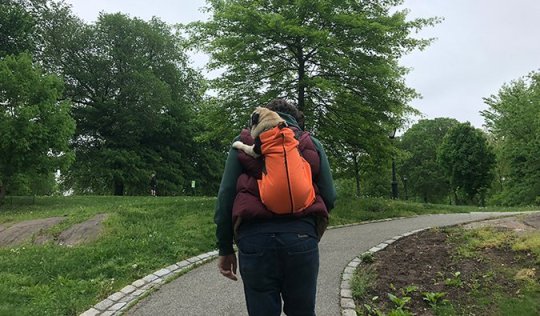
There are many options on the market when it comes to pet carriers. My favorites include the k9 Sport Sack, a dog carrier backpack that fits dogs of up to 40 lbs. (psst — use the promo code BOOGIE for 10% off). It comes in multiple colors and can be personalized with patches. I also use The Roodie, a pet-carrier hoodie that holds dogs weighing up to 15 lbs.
6. Be respectful of the people you meet

No matter where you go with your dog, be honest and considerate with those around you. Some people love animals, while others can be terrified of even a tiny puppy. Be polite and know your dog’s limits.
Remember that human relationships with dogs vary incredibly across cultures. For example, in Guatemala, we saw more street dogs than pets. People were often surprised to learn that our dogs travel on planes, and even more taken aback to learn that they sleep in our bed. Try to be aware of these cultural differences, and be sensitive to the human-canine boundaries to which people are accustomed.
Moreover, if your pet tends to be unfriendly with humans (or other dogs), make that very clear to anyone approaching. You don’t want to end up in a situation that could have been avoided with a clear warning. After all, dogs are animals — as owners we are the ones responsible for them.
7. Triple-check airline pet policies
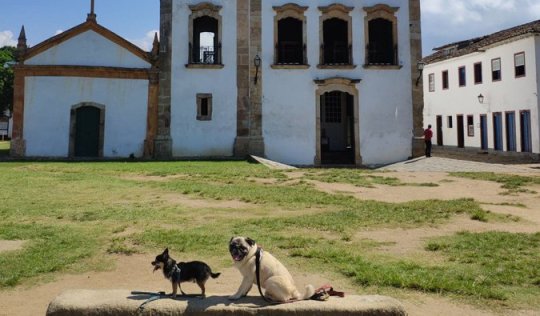
When flying, especially internationally, we always double-check, if not triple-check, airline pet policies. Policies are constantly in flux, and rules are always changing. You want to make extra certain that you and your dog are both welcome on that flight. I usually check the airline’s website, give them a call, and send an email confirmation when I’m bringing my dogs on a flight.
Policies and prices for flying with your pet also vary according to a few factors. They usually depend on the airline, the country you’re traveling to, and the size and breed of your pet. There’s also the option of air travel in the cabin, in cargo, and in baggage. (Want to know the difference between these three? Click here.)
Some of my favorite dog-friendly airlines include American Airlines, Delta Airlines, Air France, and JetBlue.
8. Countries differ

When it comes to crossing borders, countries differ in their rules and regulations for allowing your pup entry. Some only ask for a rabies vaccine and paperwork from your vet, while others require a pet quarantine and high fees. There’s also a list of banned breeds for whom some countries won’t allow entry at all.
The hardest countries to enter tend to be islands, like Australia, Japan, Fiji, and Iceland. The easiest are countries in the European Union (if your pup has an EU passport!). Research the rules of your destination country thoroughly and far enough in advance to ensure that you can meet all the requirements.
9. Make dog friends

As I said earlier, dogs are social animals. When you’re out walking or spending time at the local park, befriend other dogs and their owners. They’ll let you in on their favorite hangouts, the best dog-friendly restaurants in the area, and which vets they trust. Dog owners know best, and they’re a great resource to have. Here are the best ways to find a local dog community online or IRL:
Go on a walk – Grab your pup and head out for a walk around the neighborhood. Stop to sniff a butt or two, and talk to dog people. Speaking to local dog owners is the best way to get the lowdown on the area, and all of the dog-friendly places around town.
Instagram – These days, dogs everywhere have their own Instagram profiles. Look up hashtags, like #dogsof and enter in your location. You’ll find dogs all over the world. Find some local pups and send them a message asking for tips.
Visit a dog park – Dog parks are a great place to exercise and socialize. Many major cities have them. If there aren’t any official dog parks in your area, ask local dog owners or people online about unofficial places where your dogs can romp around.
Find an online community – Online platforms host a myriad of groups based on things like breed, location, dog size, and activity level. I recommend searching Facebook and Meetup.com. Many online communities host meetups and social gatherings that you and your pup can join. They’re also a great place to ask questions.
Go to a pet store – Local pet shops are great resources for information. Many post flyers for local dog services, or information on nearby dog-related activities for you and your four-legged friend.
10. Pack the essentials
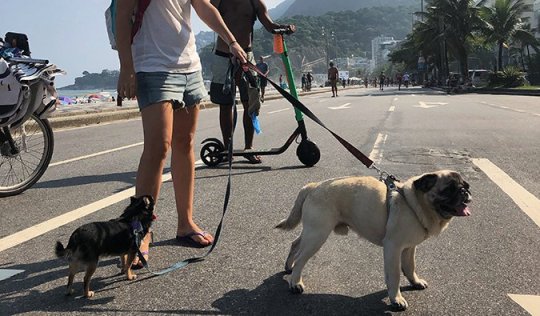
As much as you’d like to just grab your dog and go, there are a few things you’ll definitely need to bring along. Poop bags, a leash and harness, and ID tags are just a few. Pack your pup’s essentials in case you can’t find them on the road (not every location has a good pet store!).
Here’s a checklist of things you might need. It includes things like:
Dog food and water
Collapsible bowls
Toys
A bed
Flea and tick medicine
Medical records and travel documents
Also, make sure your dog is microchipped and always up to date on standard vaccinations.
11. Teach your dog manners

Before you hit the road, it’s best if your dog knows a thing or two. Basic commands, like “sit” and “stay,” will make managing a dog while traveling easier. A well-trained dog can be left behind in a hotel room or rental to rest for a few hours while you have a nice dinner or visit a museum.
Plus, you’re more likely to get a “yes” to your requests if people see that your dog is well behaved. No one wants to be around a barking or rowdy dog who won’t listen!
Work on obedience and manners, and make sure your pup always puts their best paw forward.
If you need help, working with a certified trainer is best. There are also many resources online to help ensure that your dog is obedient and ready to venture out into the world. I recommend the AllThingsPups training tips — they have a YouTube channel, Instagram account, and podcast.
12. Say hello!

Seeing a dog always puts a smile on a stranger’s face. Be polite to people you encounter with your pup. Kindness goes a long way.
On a recent flight, a friendly exchange with a dog-loving airline worker led to my pups and me getting a whole row to ourselves. Extra legroom and seat space are always welcome!
I’ve also gotten free treats, lots of useful tips, and other upgrades all because of a smile, some amicable banter, and of course, my friendly pups.
***
Travels with my dogs are more colorful and locally focused, and force me to explore parts of my destination that I would have never experienced had I been dogless. My dogs help me meet more people, see more places, and live in and cherish the present. There’s no better way to appreciate a new place than with a dog!
Candy Pilar Godoy has visited almost 40 countries across six continents, and speaks three languages. She often travels with her dogs, and writes about pet travel on her blog Boogiethepug.com. Candy currently lives in Rio de Janeiro with her two dogs, Boogie and Marcelo, and cat Kitty. Follow them on Twitter, Facebook and Instagram.
Book Your Trip: Logistical Tips and Tricks
Book Your Flight
Find a cheap flight by using Skyscanner or Momondo. They are my two favorite search engines because they search websites and airlines around the globe so you always know no stone is left unturned.
Book Your Accommodation
You can book your hostel with Hostelworld. If you want to stay somewhere other than a hostel, use Booking.com as they consistently return the cheapest rates for guesthouses and cheap hotels. I use them all the time.
Don’t Forget Travel Insurance
Travel insurance will protect you against illness, injury, theft, and cancellations. It’s comprehensive protection in case anything goes wrong. I never go on a trip without it as I’ve had to use it many times in the past. I’ve been using World Nomads for ten years. My favorite companies that offer the best service and value are:
World Nomads (for everyone below 70)
Insure My Trip (for those over 70)
Looking for the best companies to save money with?
Check out my resource page for the best companies to use when you travel! I list all the ones I use to save money when I travel – and I think will help you too!
The post 12 Things Every Person Who Wants to Travel with Their Dog Should Know appeared first on Nomadic Matt's Travel Site.





Source link
Read the full article
0 notes
Text
What Does Travel Insurance ACTUALLY Cover?


Posted: 7/12/2019 | July 12th, 2019
Travel insurance is probably the most boring topic when it comes to planning a trip. Nobody wants to focus on the worst-case scenario before they even leave home.
Plus, researching insurance is just plain tedious. There is a lot of fine print to scour, requiring you to read over the minutiae of each insurance plan before you pick the one that’s best for you.
But it’s also the most important topic too. Should something terrible happen while you’re on the road, you want to have the confidence that your insurance plan will cover you.
While none of us want to imagine getting hurt or robbed or having to cancel our plans, the fact of the matter is that these things happen. It’s rare, but shit you don’t expect does happen when you travel.
I never expected to break my camera in Italy.
I never expected to rupture my eardrum scuba diving in Thailand.
I never expected to get stabbed in Colombia.
And while these unfortunate events are few and far between, it’s always better to be safe than sorry (trust me!). Medical bills aren’t cheap. Emergency evacuations cost tens of thousands of dollars. Unless you have a stockpile of disposable income, chances are you’ll want to buy travel insurance for your next trip.
There are a lot of misconceptions about travel insurance, so you’ll also want to learn everything you can about your plan and the company that is covering you.
Will your plan cover pre-existing conditions? Is there an age limit or a limit on how long you can be out of your home country? Will you be able to see doctors for non-emergency visits? What about dental coverage?
There is a lot to learn, and it can be overwhelming if travel insurance is new to you.
Fortunately, it doesn’t have to be!
In this post, I’ll go over what is ACTUALLY covered by reputable travel insurance plans, so you know what to look for.
Table of Contents
What Travel Insurance DOES Cover
What Travel Insurance DOES NOT Cover
Our Suggested Insurance Companies
What Travel Insurance DOES Cover
Medical Emergencies
Chances are when you think of travel insurance, you’re picturing a medical emergency.
While accidents or serious illnesses while traveling abroad are rare, here’s what you can expect to be covered by a reputable insurance company:
Your hospitalization fee
Surgery costs
Outpatient treatment costs
Visits to registered medical practitioners (relating to your emergency injury)
Prescribed medicines (relating to the injury)
Medical evacuation (usually this is just to a local medical facility unless you have a more comprehensive plan from a company like MedJet. See below for more on evacuation.)
Emergency Evacuation
Medical evacuations due to accidents or natural disasters can cost upwards of $500,000. Naturally, this is where having a solid insurance plan comes in handy. Most insurance plans will evacuate you to a local hospital in case of injury or a nearby location in the case of a natural disaster.
In some cases, you will be repatriated back to your home country as well (though this is rare and usually only occurs in cases where local medical staff can’t provide the assistance you need).
Dental Emergencies
As with other medical emergencies, what’s covered here is accidental injury and sudden pain. For example, chipped teeth or a sudden infection.
General checkups are not covered, nor is major dental work that doesn’t relate to an injury or accident sustained abroad. And if you just want your teeth cleaned or a new filling, you’ll have to pay for that out of pocket.
Death Overseas
I know it’s never fun thinking about something like this happening, but knowing that you’re covered will give you and your loved ones peace of mind.
Should the worst happen, most insurance plans will cover the costs of a family member coming to get your body to take it home. Some policies will also include cremation services or burial overseas, should that be preferred.
Common exclusions would include death from alcohol or illicit narcotics, suicide, or pre-existing conditions not covered by the plan.
Flight Delays and Cancellations
If your flight gets delayed or canceled, you can apply for compensation from your travel insurance provider (assuming the airline doesn’t provide coverage for you). As long as the cancellation or delay is not your fault, you can apply for reimbursement. However, if you miss your flight because you slept in, that doesn’t count as a valid reason!
Be sure to keep all emails, receipts, and correspondence from your airline regarding the delay or cancellation, as you’ll need them to verify your claim and get reimbursed.
Trip Cancellation
If you need to cancel your trip — either before you depart or during your trip — for a verified medical reason, the death of a close relative, or the death of your travel partner, you can apply to get reimbursed from your insurance company.
To verify your claim, be sure to get a note from your doctor if you’re canceling due to illness. If you’re canceling due to a death, you’ll need to submit a copy of the death certificate (as well as other supporting documentation).
Lost or Stolen Property
If your bags get stolen while you’re traveling, most travel insurance companies will reimburse you for some or all of the items (there are usually limits on gear like laptops and cameras unless you buy a comprehensive plan with additional coverage). Be sure to file a police report. It will be necessary for making a claim.
Coverage will usually include compensation for delayed baggage or baggage that’s damaged in transit as well.
If your wallet or passport is stolen, some plans will cover the cost of having a new passport or credit card mailed to you (this usually will depend on your residency). If your wallet is stolen with cash in it, most plans won’t reimburse you for the cash. One exception is the Explorer Plan from World Nomads, which covers up to $200 USD in cash compensation.
Damaged or Stolen Gear
Most travel insurance plans will include coverage for lost or stolen gear, such as laptops, cameras, and mobile phones. However, these high-ticket items usually have a cap on how much you’ll get back (usually under $1,000 USD per item). If you’re traveling with expensive gear, you’ll want to pay for supplementary coverage to make sure it’s sufficiently covered.
Be sure you have receipts for all your gear as well. Keep copies of them in your inbox, so if something happens, you can file your claim without having to track down copies.
What Travel Insurance Does NOT Cover
While every plan is different, here is a list of the most common things that will not usually be covered by your standard or basic travel insurance plan:
Accidents sustained while participating in extreme activities, like hang gliding, paragliding, or bungee jumping (though you can often upgrade to plans that do cover those activities)
Technical climbing or alpine hiking (again, some plans can be upgraded to cover these activities)
Alcohol- or drug-related incidents (including death)
Carelessness in handling your possessions and baggage
Pre-existing conditions. For example, if you have diabetes and need to buy more insulin, you won’t be covered
General checkups for non-emergencies
Stolen cash (usually not covered by the standard “theft coverage,” though some companies, like World Nomads, can insure a limited amount of your cash)
Missed flights or connections for reasons under your control
A few other notes about standard policies:
If civil unrest makes your destination unsafe but your government hasn’t called for an evacuation, most insurance companies won’t evacuate you. (MedJet is the exception here. They have the best evacuation coverage.)
Changing your mind about your trip, unfriending or breaking up with your travel partner, and pre-existing medical conditions don’t qualify for most trip cancellation plans
If your visa is refused, you likely won’t be reimbursed if you decide to cancel your trip
Suggested Companies
To help you stay safe on your next trip, here’s a list of the best travel insurance companies:

My favorite company is World Nomads. I’ve been using them since I started traveling all the way back in 2003. They are reliable, and claims are processed quickly and fairly. The company was built by an ex-nomad so he gets the traveler mindset and knows what travelers need to stay safe.
As someone who is often traveling, I prefer World Nomads because I can purchase and renew my insurance policy online in a matter of minutes (it’s super easy). They have a very friendly and responsive staff who answer questions and help solve problems via social media, they have great customer feedback, and most importantly, they provide a lot of coverage at a fair price.
They are also endorsed by Lonely Planet and National Geographic, which tells you how good they are!
Other good travel insurance companies to consider

Best high-end electronics coverage.
Affordable deductables.
Up to 5 million in coverage.
Available inside and outside of the USA.
Visit Site

Best for people living overseas.
The closest thing to normal health insurance.
Available for non-US residents.
25 different places to choose from.
Visit Site

Short-term and annual plans.
Extensive medical transport coverage.
Available for residents of USA, Canada, and Mexico
Limited time spent in foreign medical facilities.
Visit Site

Affordable plans.
Basic coverage options.
Great for students/shoestring backpackers.
Applicable accounts include a free student discount card.
Visit Site

Compare plans from 28 providers.
Best company for over 65.
“Anytime advocates” ask insurer to give your claim a second look if you think it was unfairly denied.
Guaranteed low prices.
Visit Site
***
These days, I never leave home without travel insurance. Having had to make emergency claims a few times over the years, I’ve learned the hard way that it’s always better to be safe rather than sorry.
Just remember that travel insurance is a for-profit industry, which means you really need to do your research before you purchase a plan. Be sure to read your plan and the fine print so you know what exactly is covered and what they expect if you try to make a claim.
Keep any receipts, emails, and documentation relating to your trip in a separate folder in your email inbox. That way, you can easily make a claim if you need to.
While the cost can seem like a lot up front, when you compare it to the potential cost of an emergency evacuation or a hefty medical bill, it’s peanuts.
Most insurance plans will only cost you a few dollars per day, providing you — and your friends and family — peace of mind in the process. If you ask me, that’s money well spent.
Book Your Trip: Logistical Tips and Tricks
Book Your Flight
Find a cheap flight by using Skyscanner or Momondo. They are my two favorite search engines because they search websites and airlines around the globe so you always know no stone is left unturned.
Book Your Accommodation
You can book your hostel with Hostelworld as they have the largest inventory. If you want to stay somewhere other than a hostel, use Booking.com as they consistently return the cheapest rates for guesthouses and cheap hotels. I use them all the time.
Don’t Forget Travel Insurance
Travel insurance will protect you against illness, injury, theft, and cancellations. It’s comprehensive protection in case anything goes wrong. I never go on a trip without it as I’ve had to use it many times in the past. I’ve been using World Nomads for ten years. My favorite companies that offer the best service and value are:
World Nomads (for everyone below 70)
Insure My Trip (for those over 70)
The post What Does Travel Insurance ACTUALLY Cover? appeared first on Nomadic Matt's Travel Site.





Source link
Read the full article
0 notes